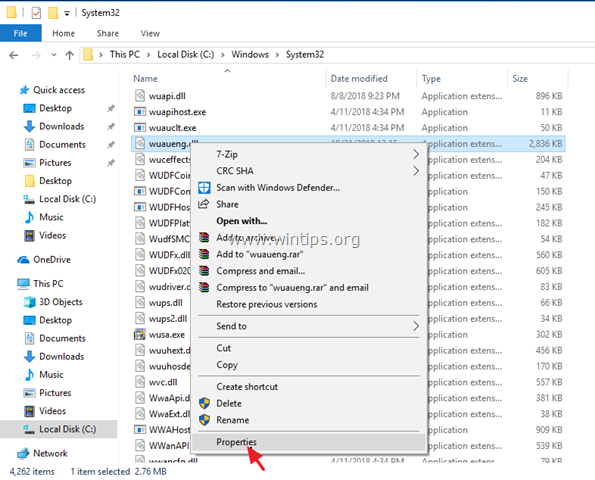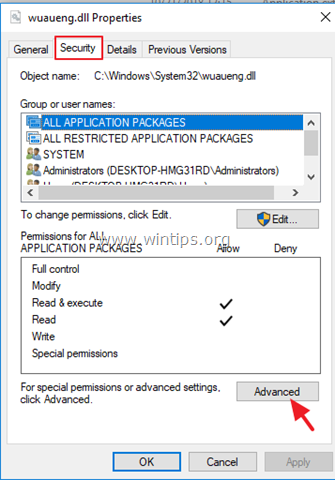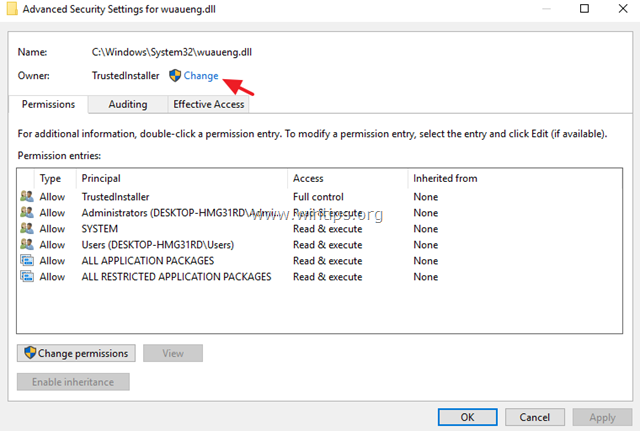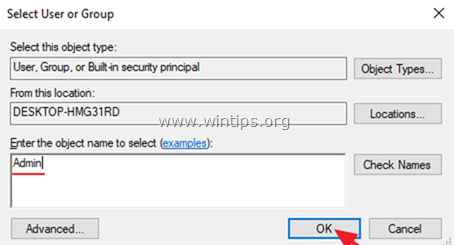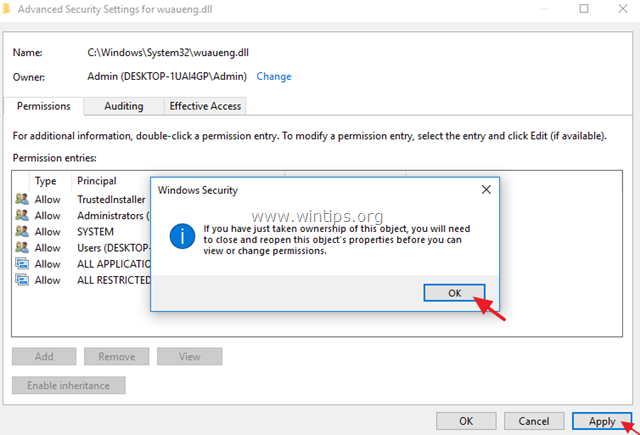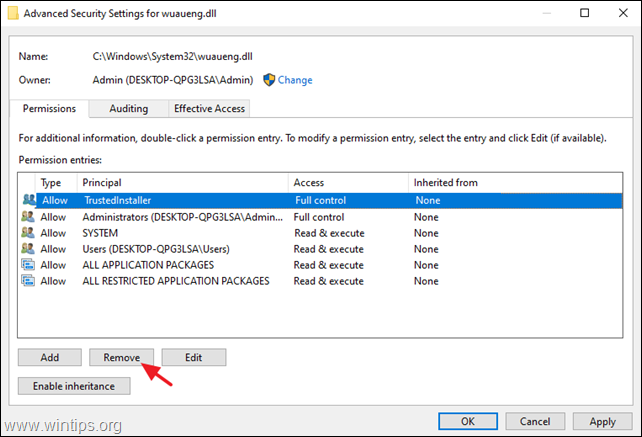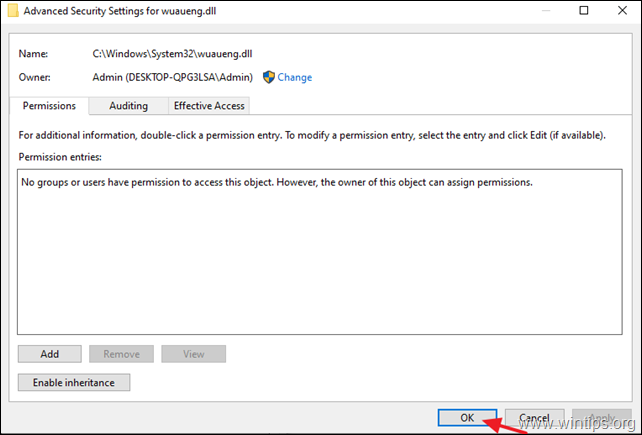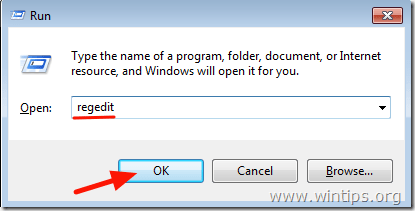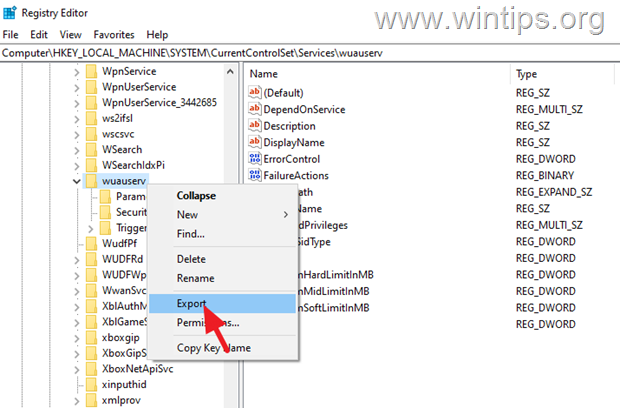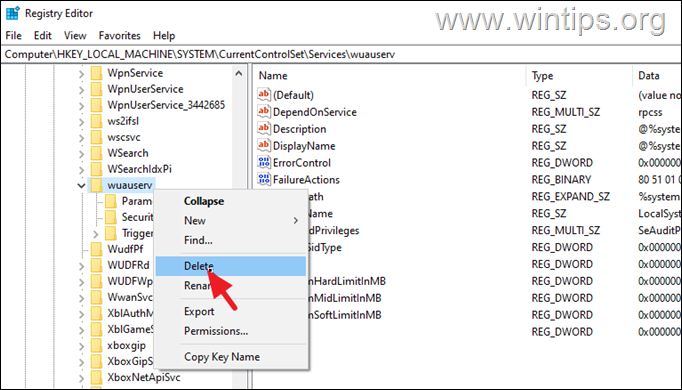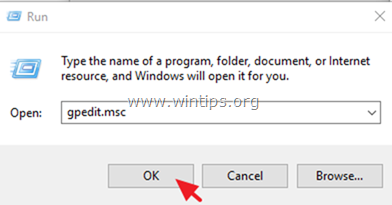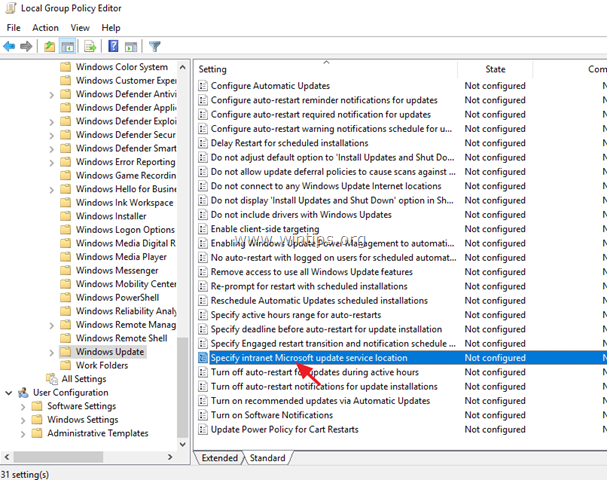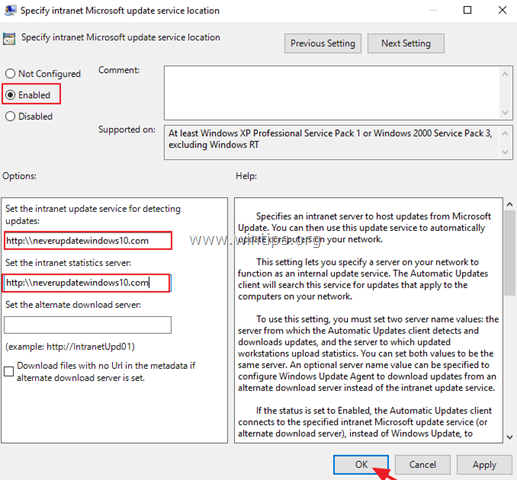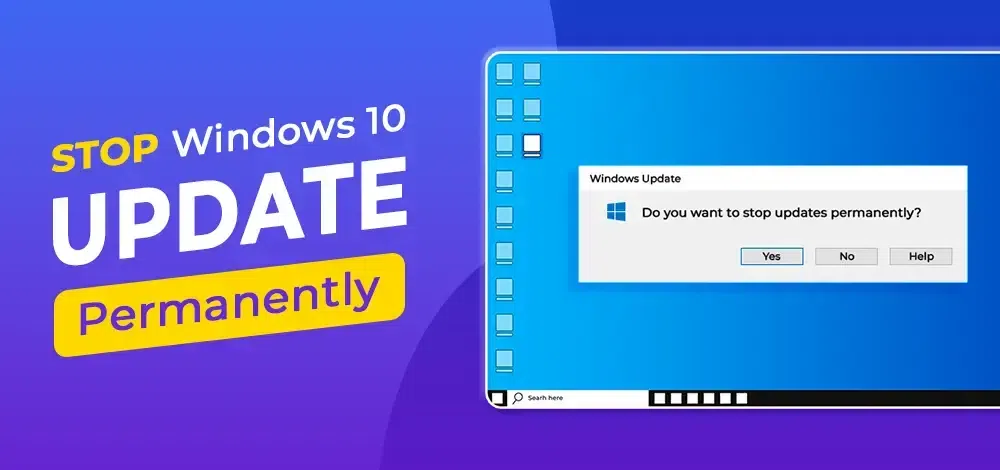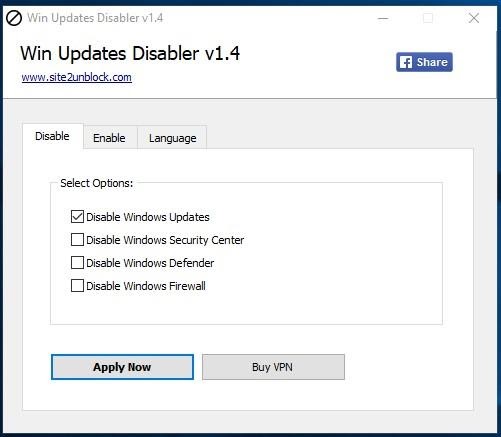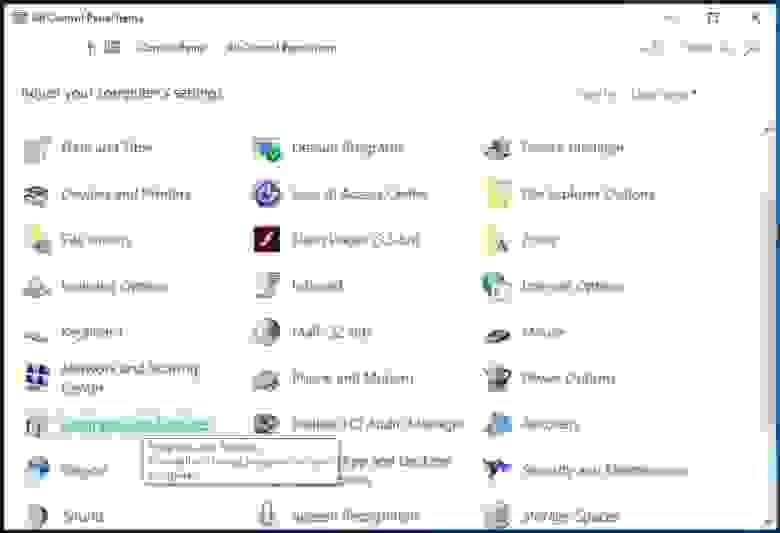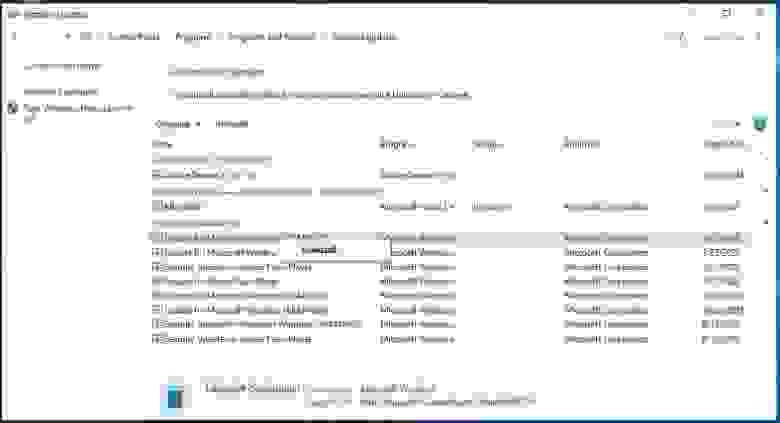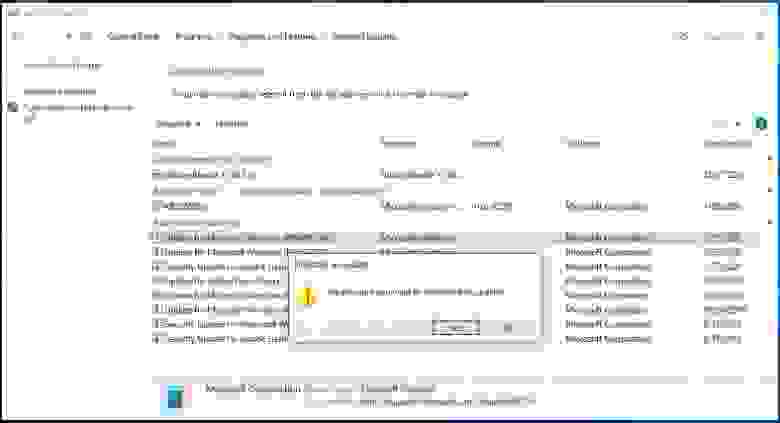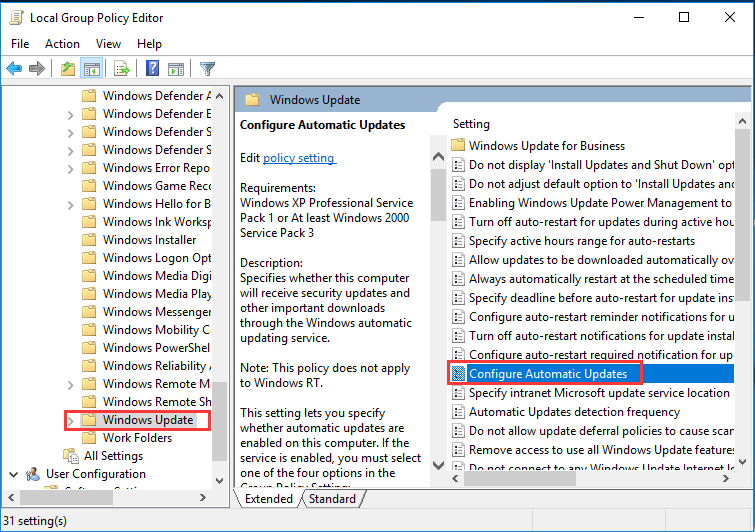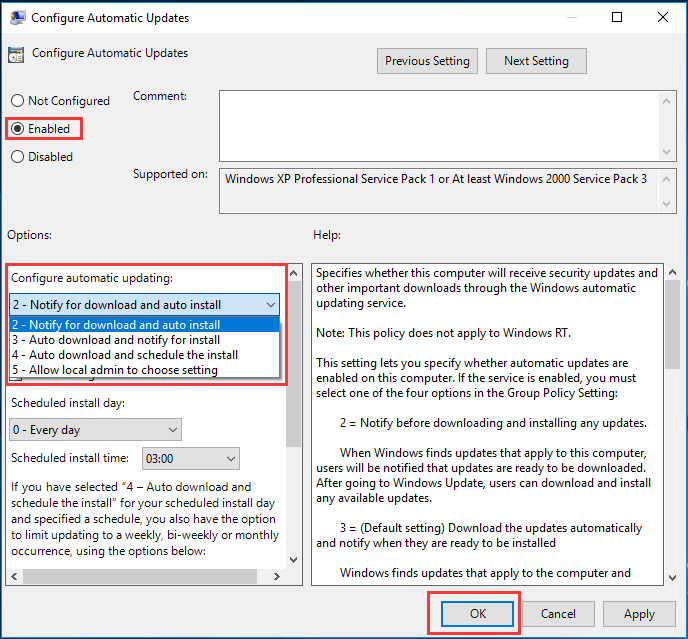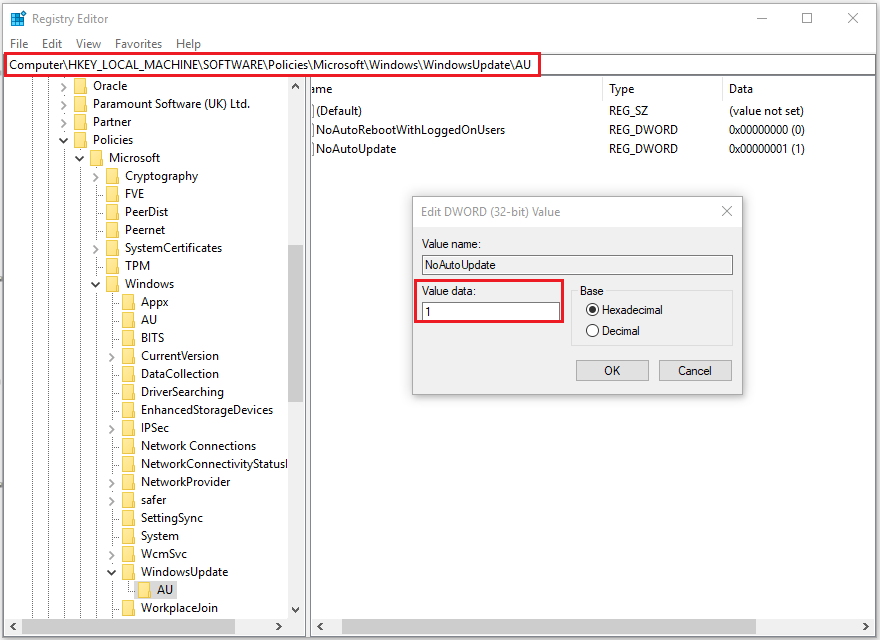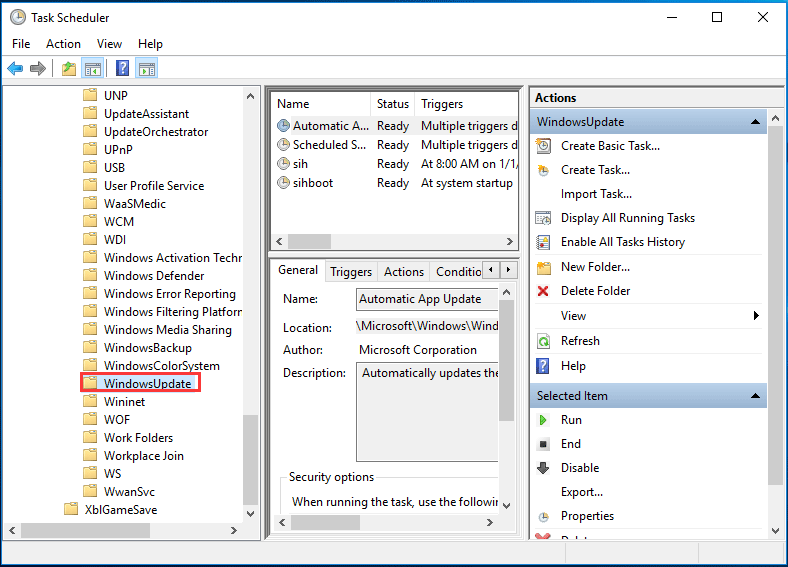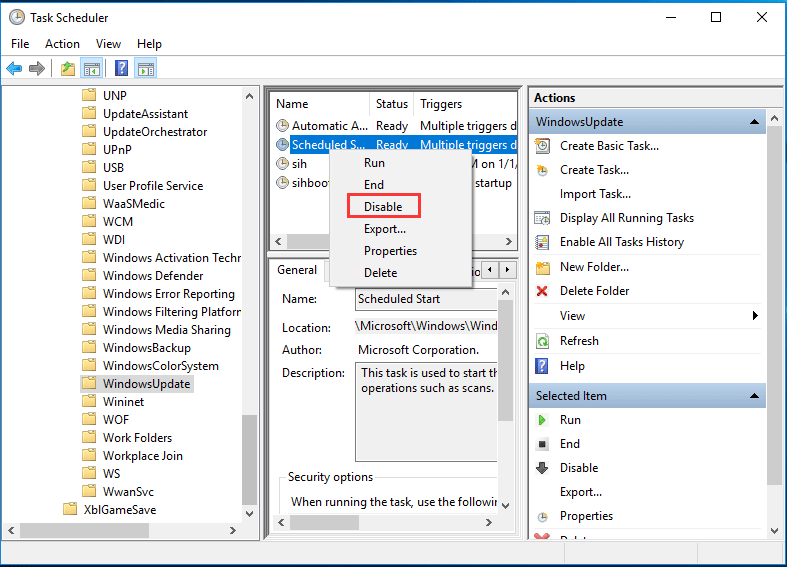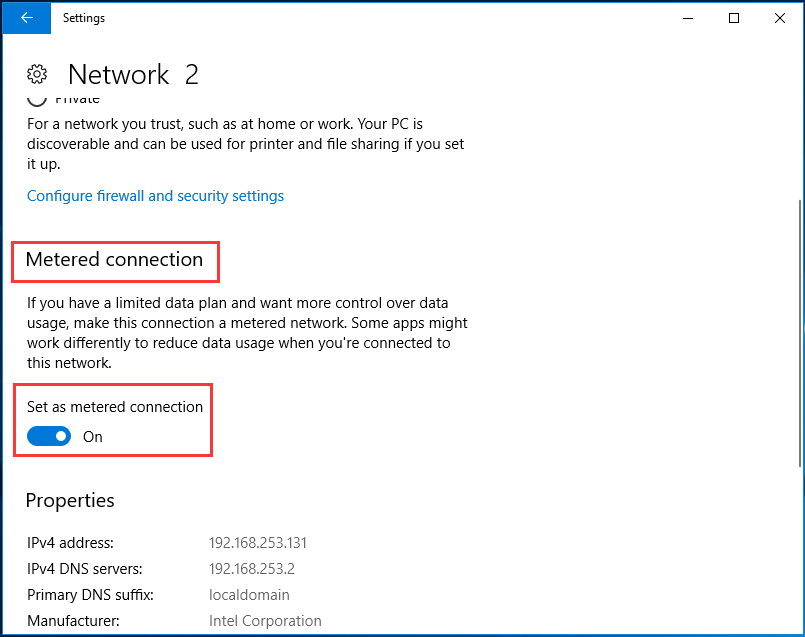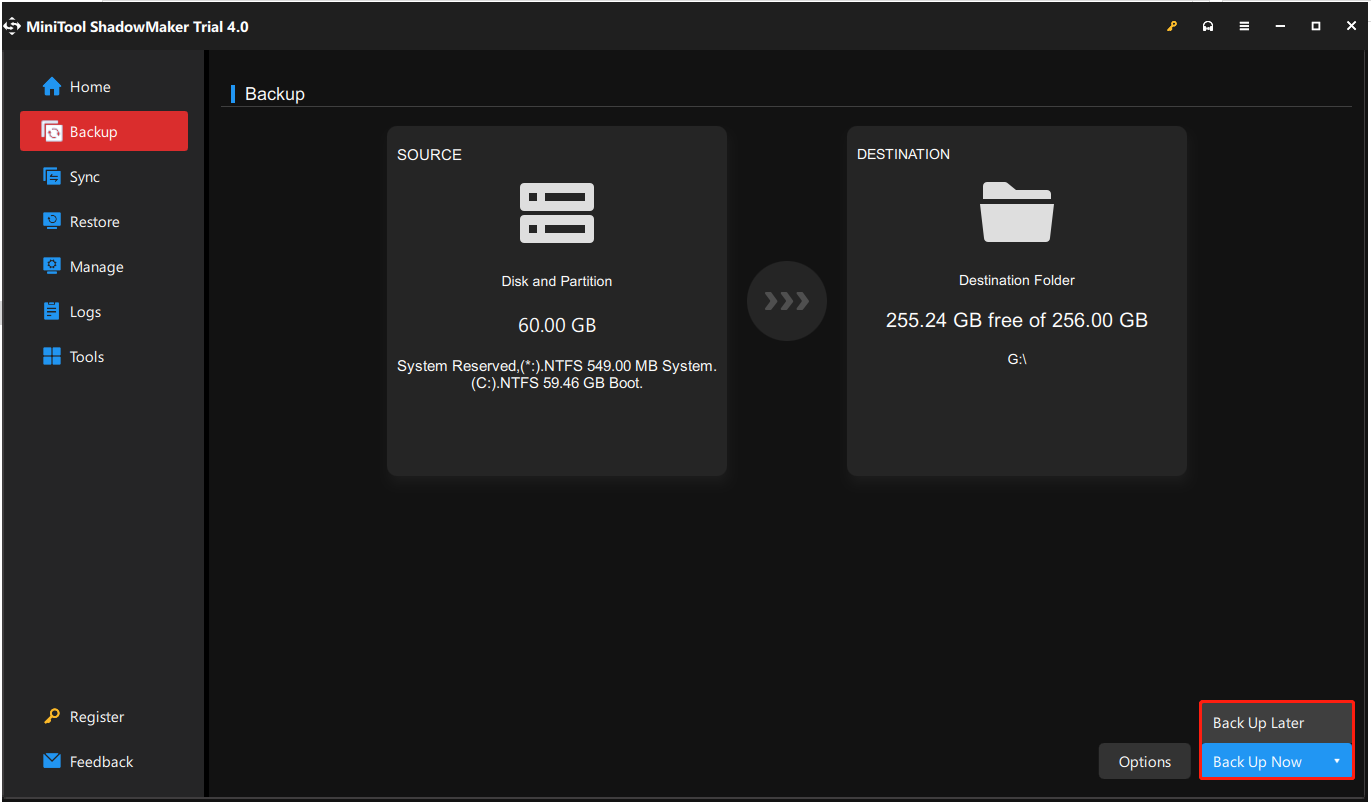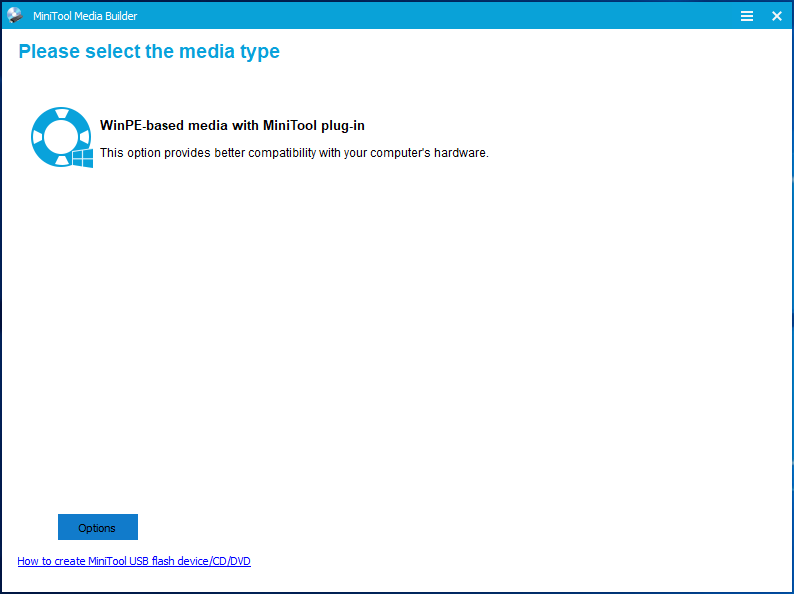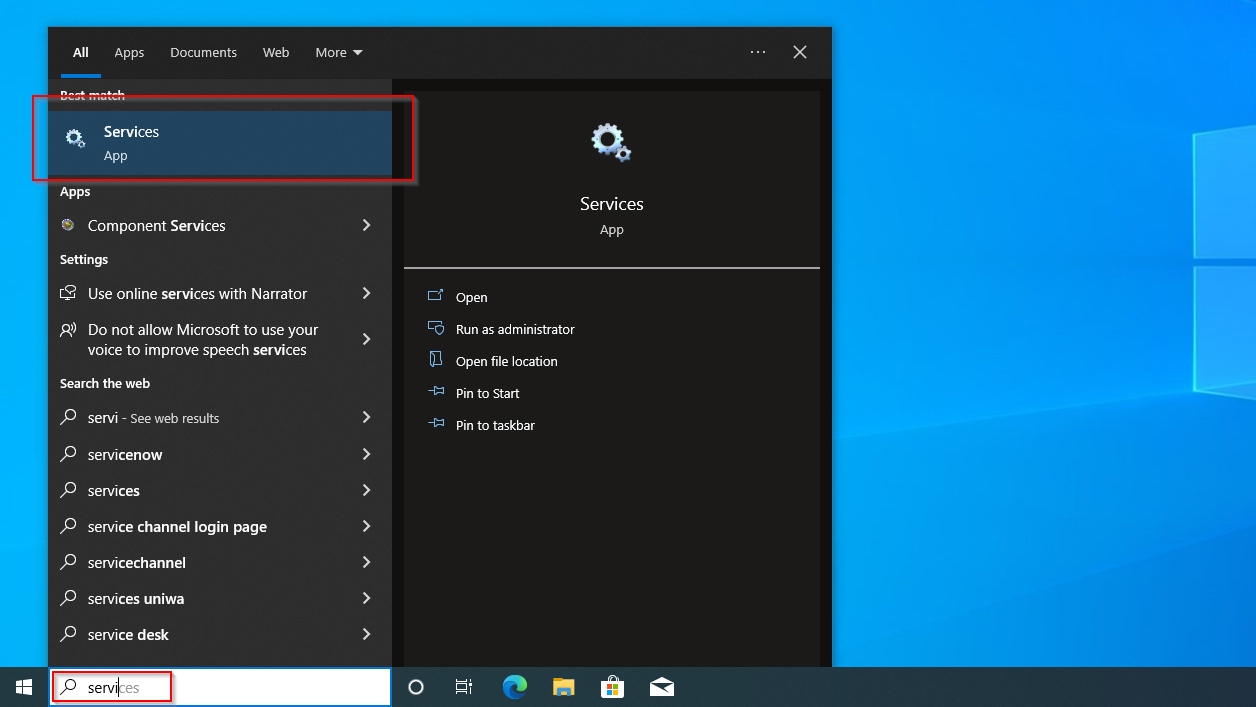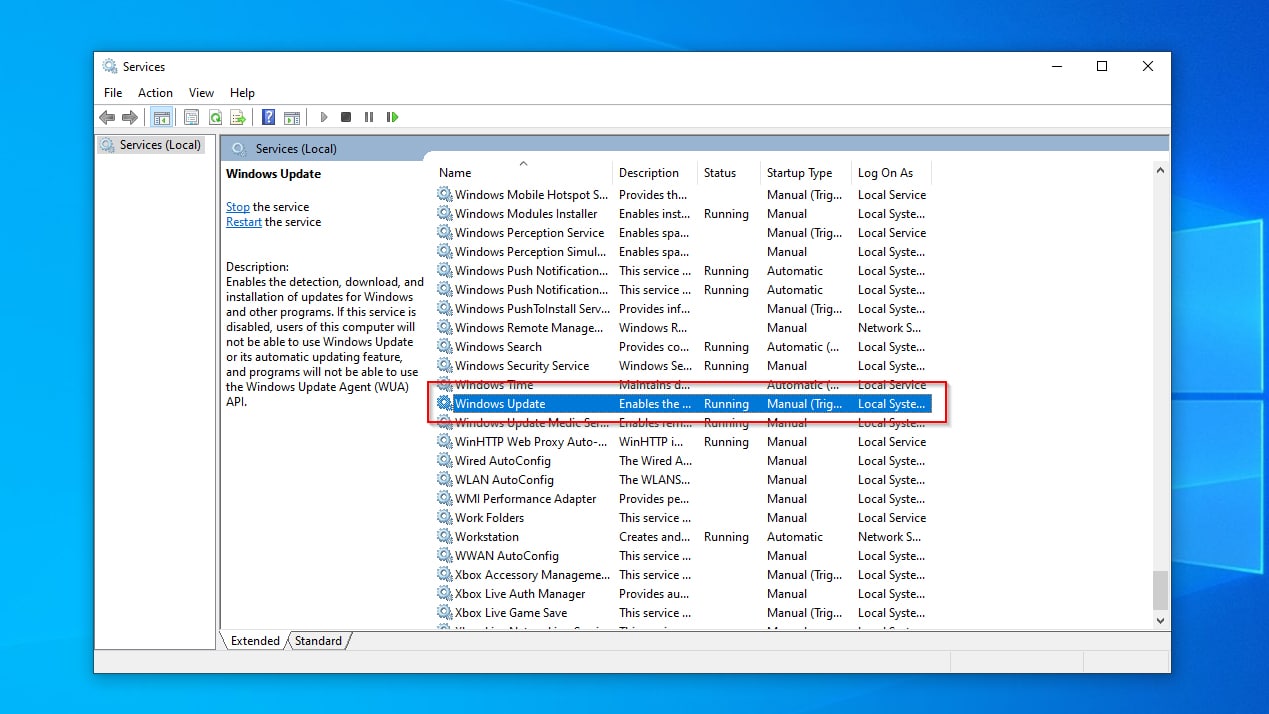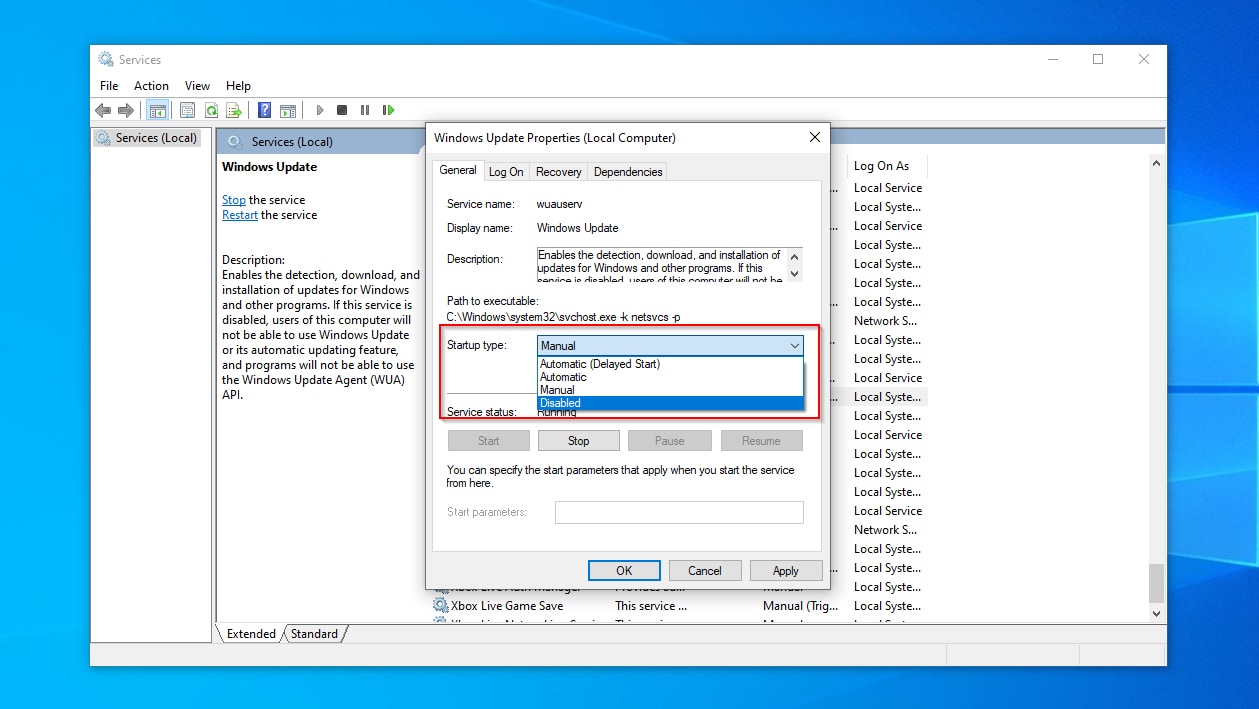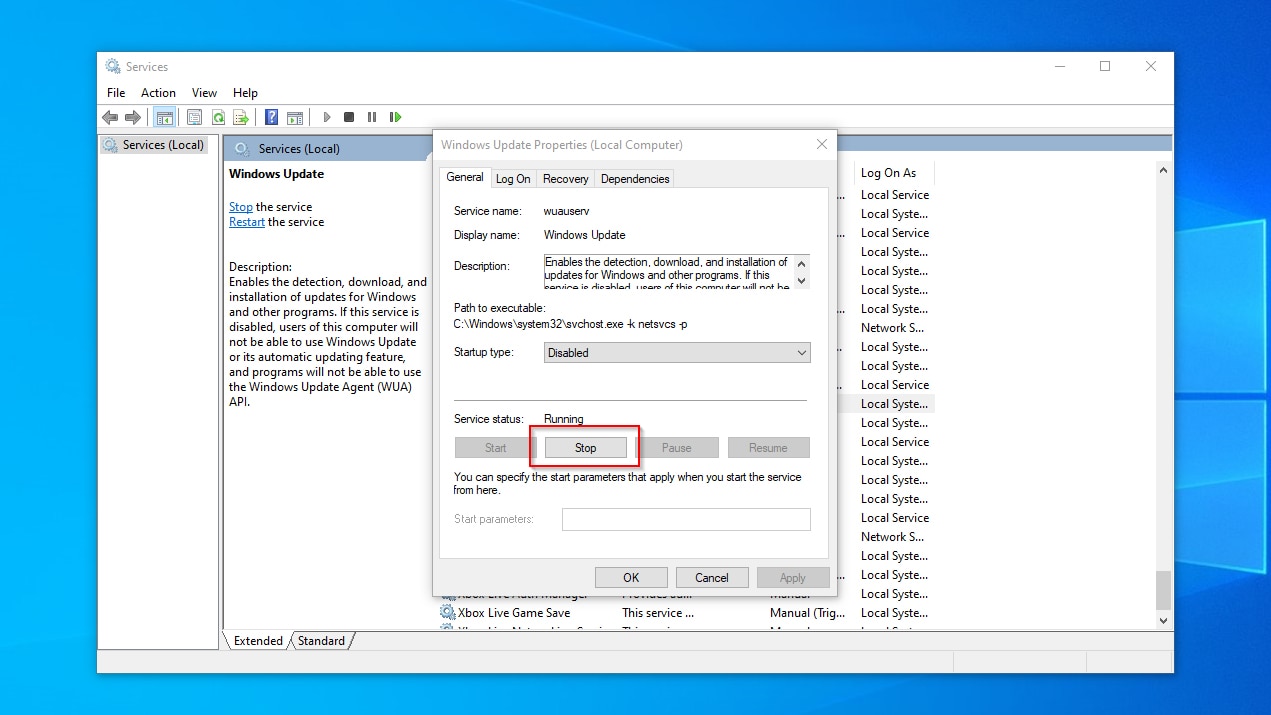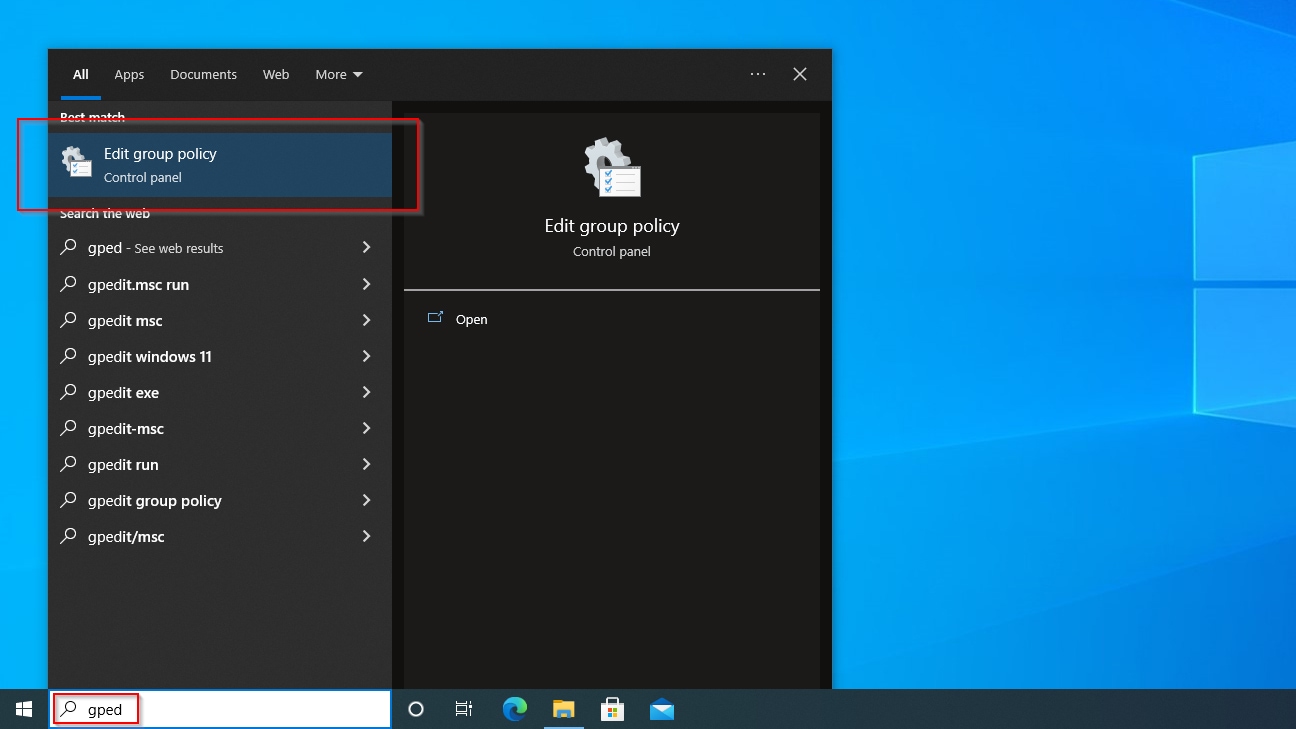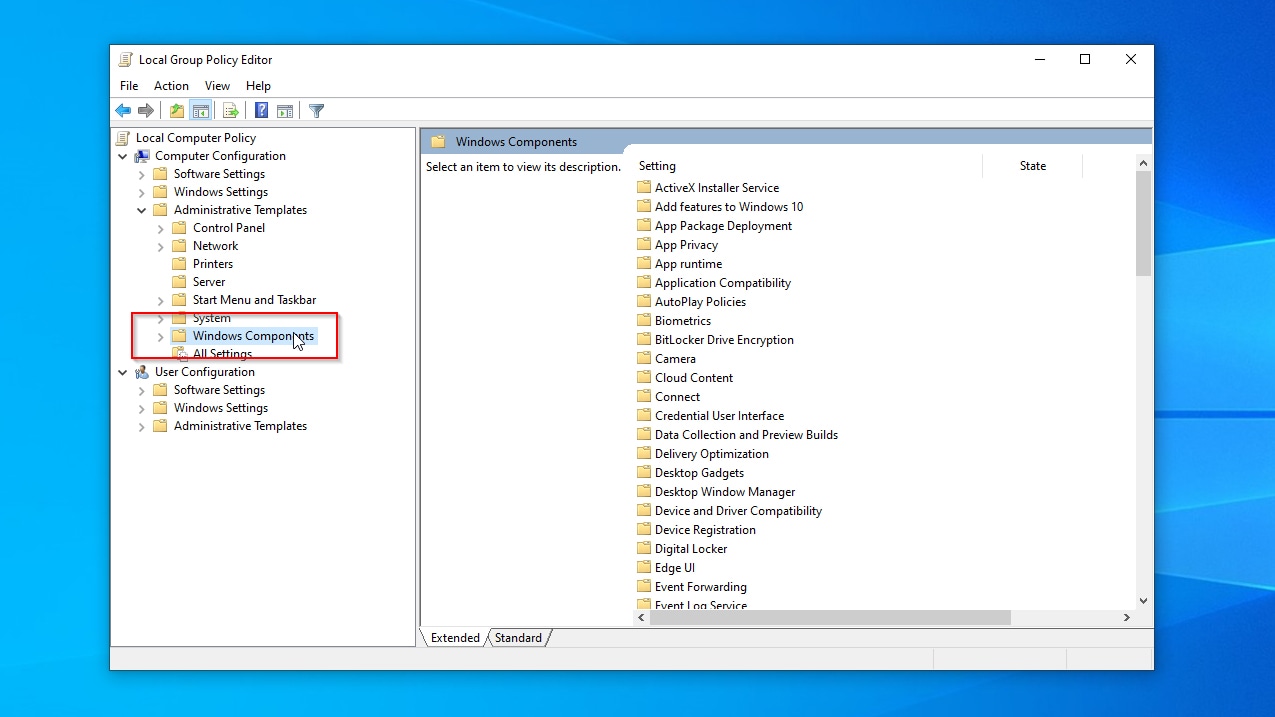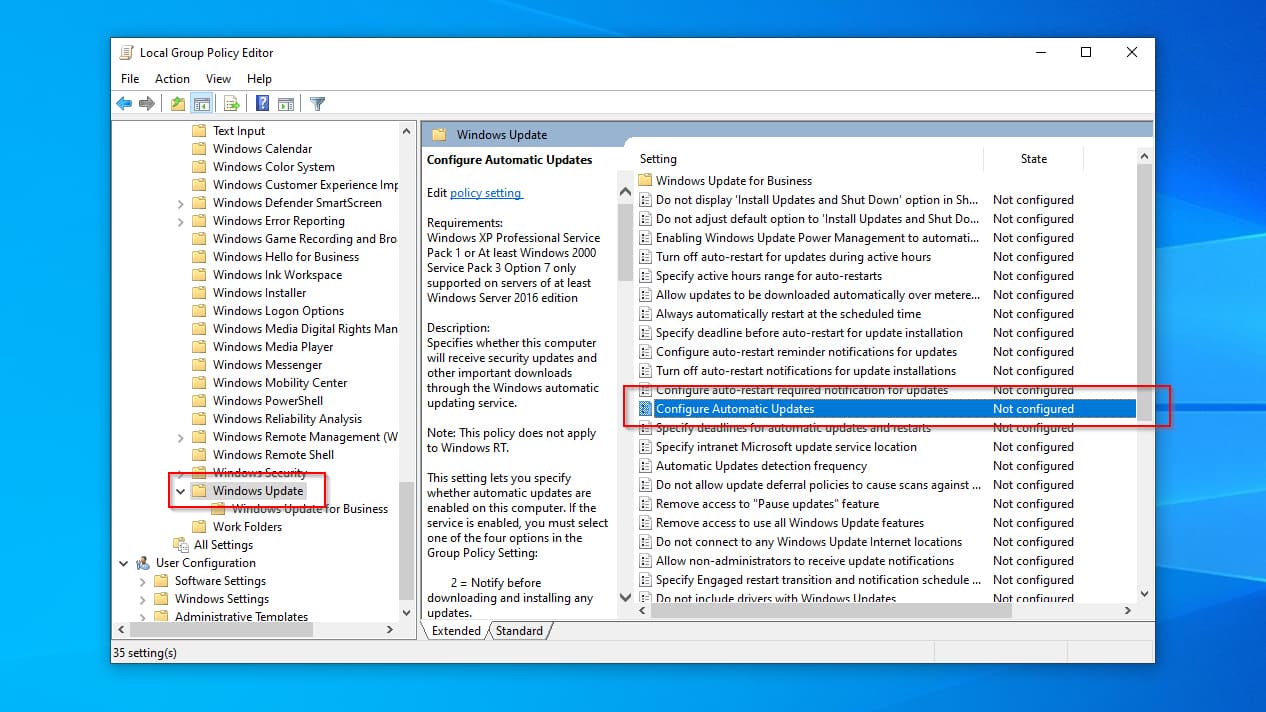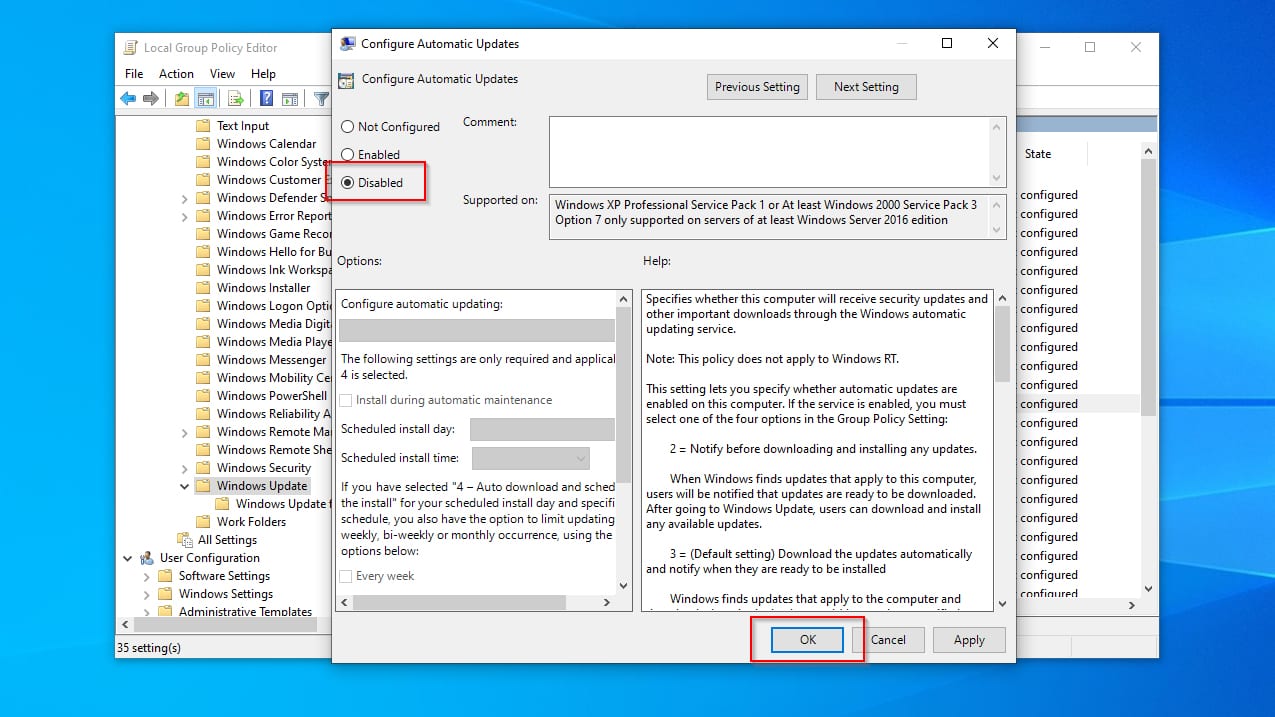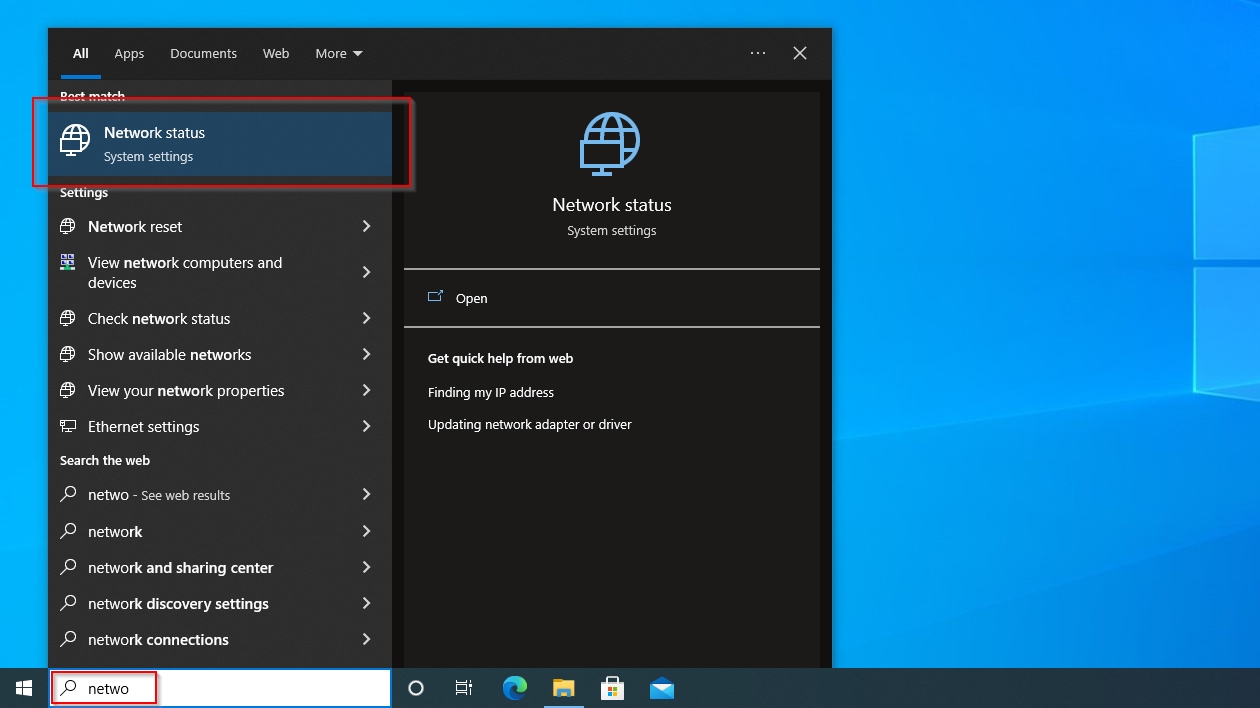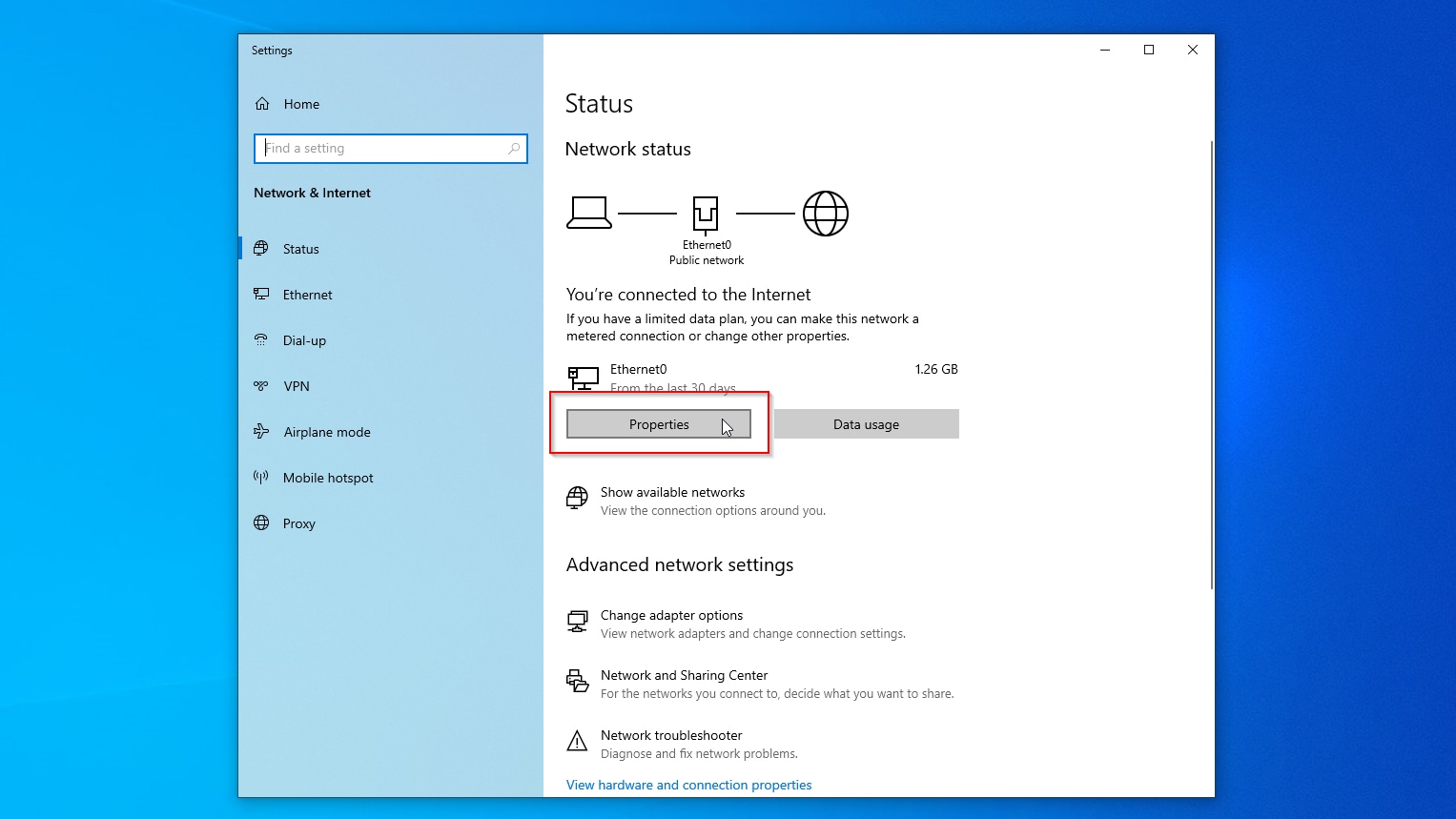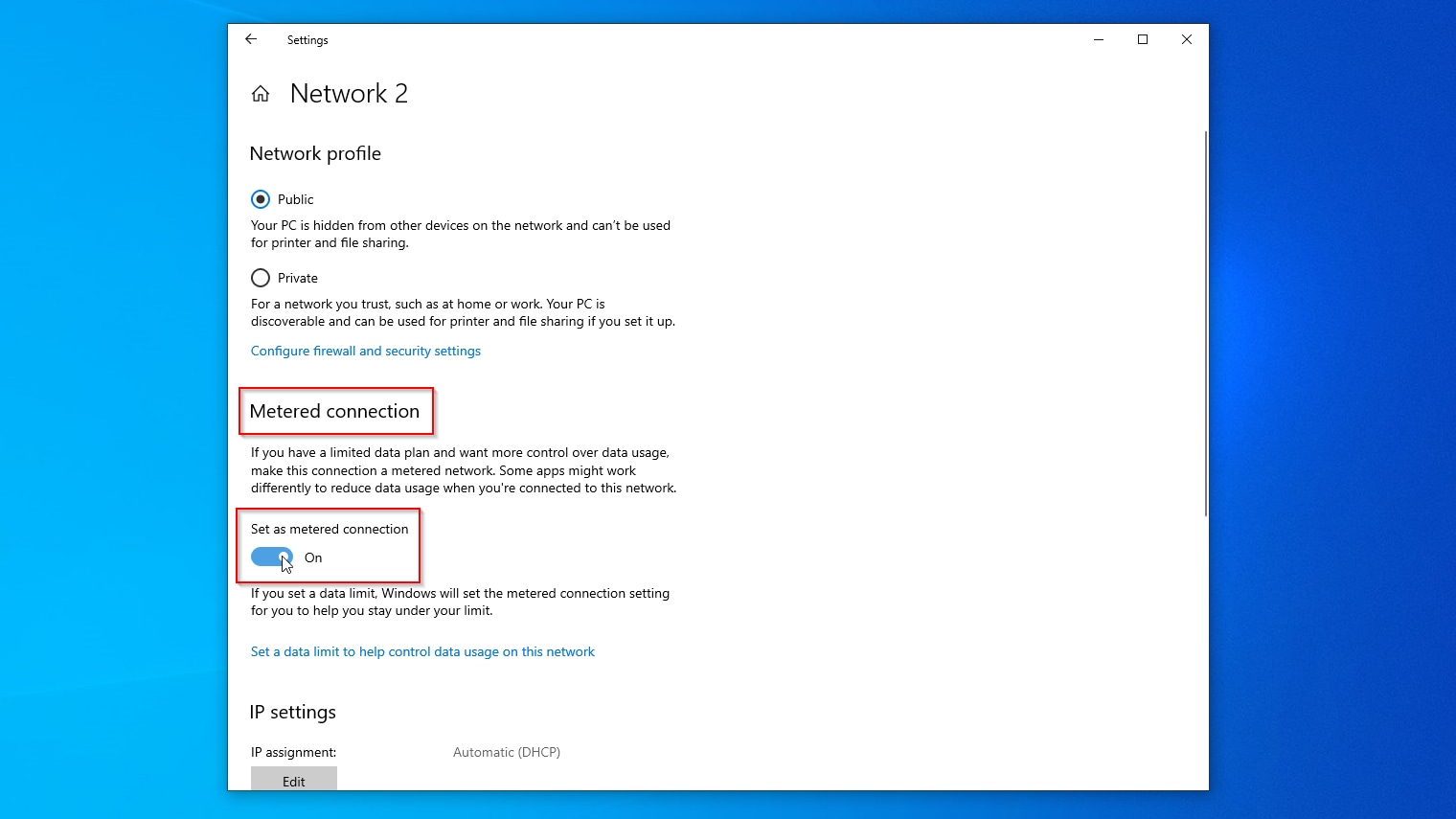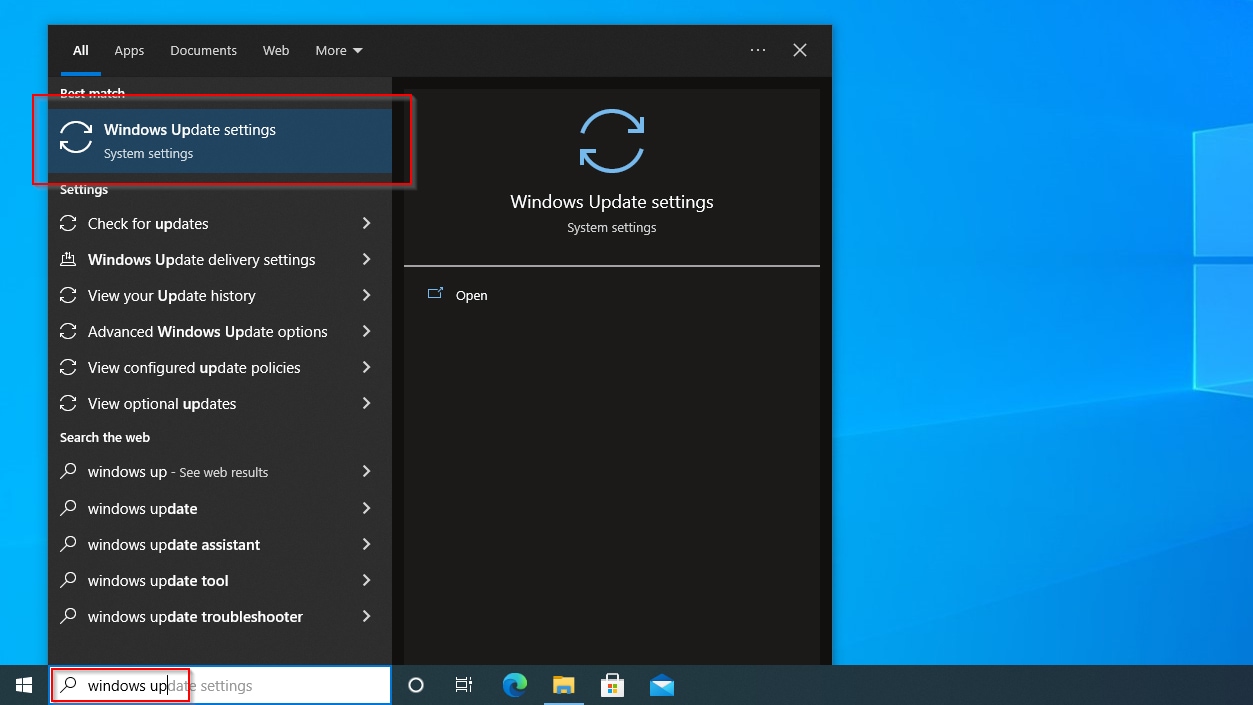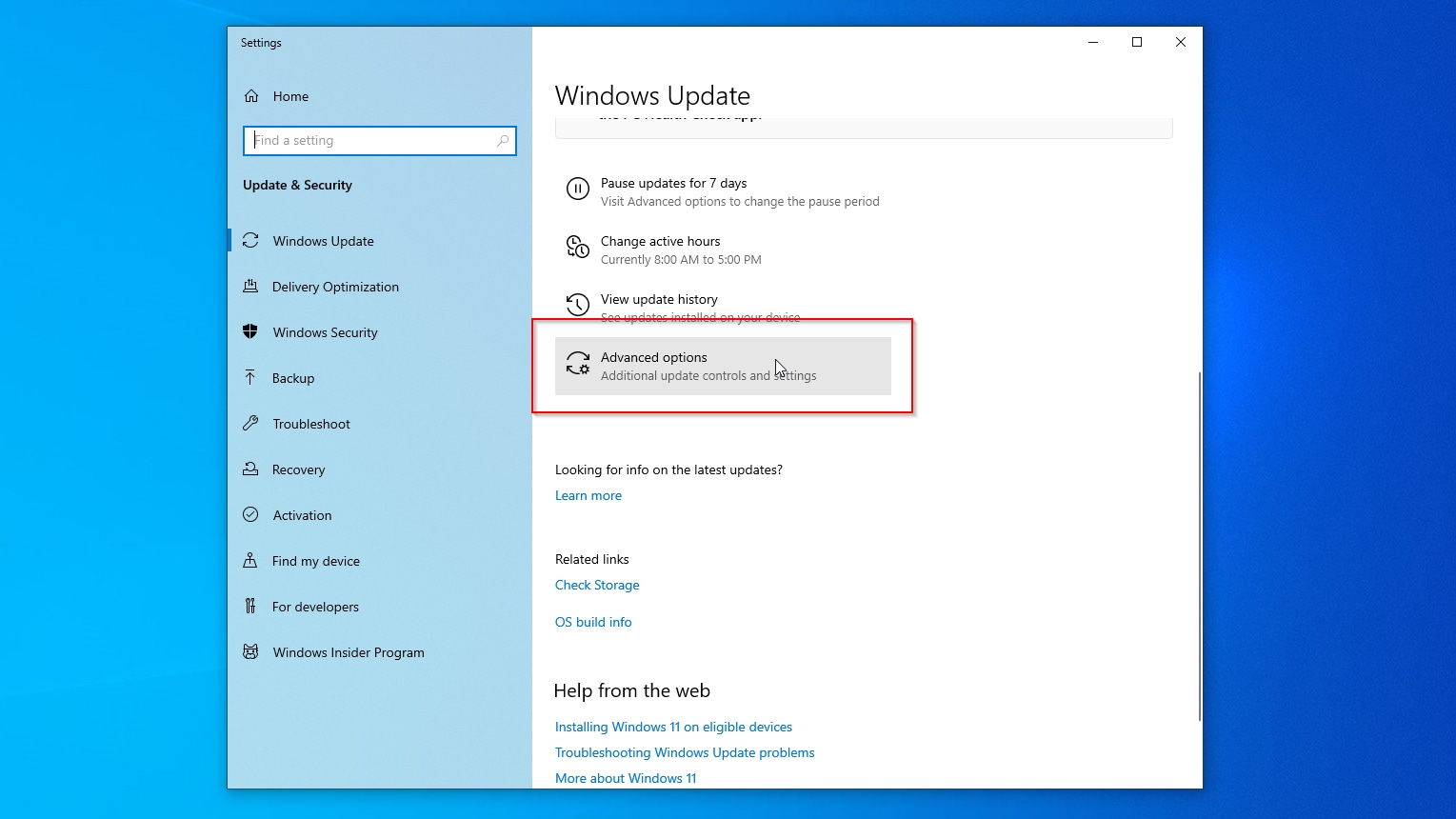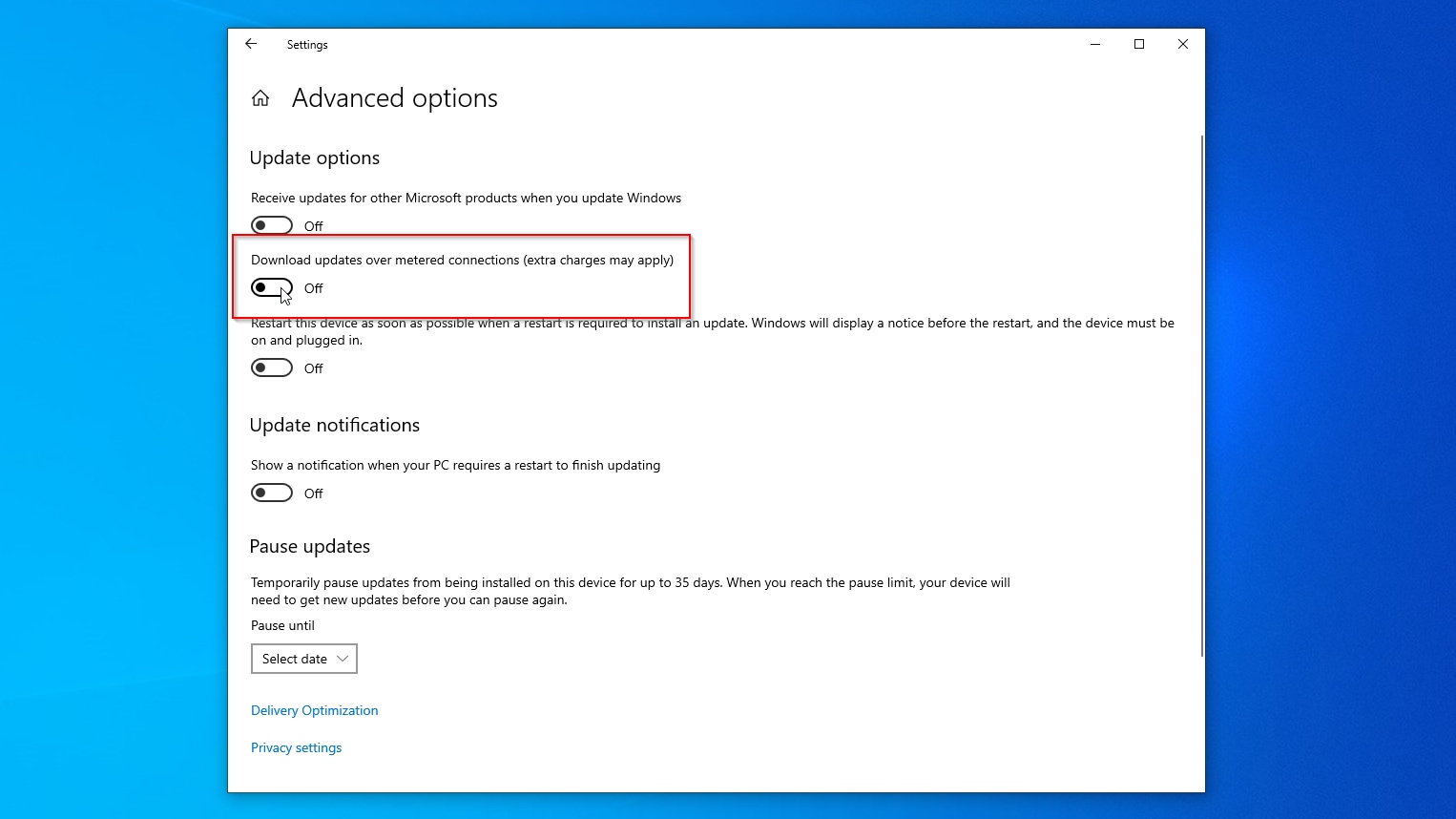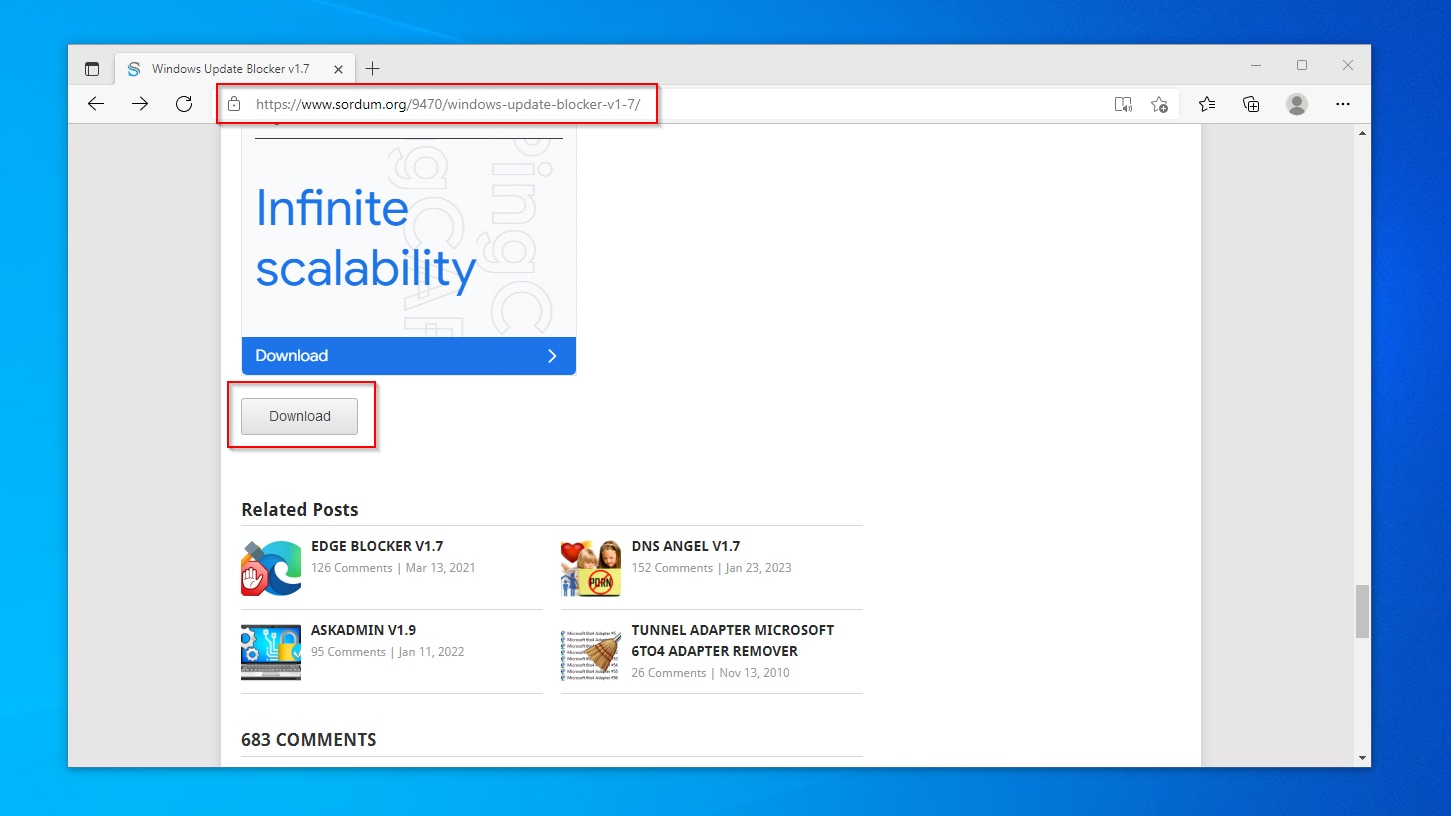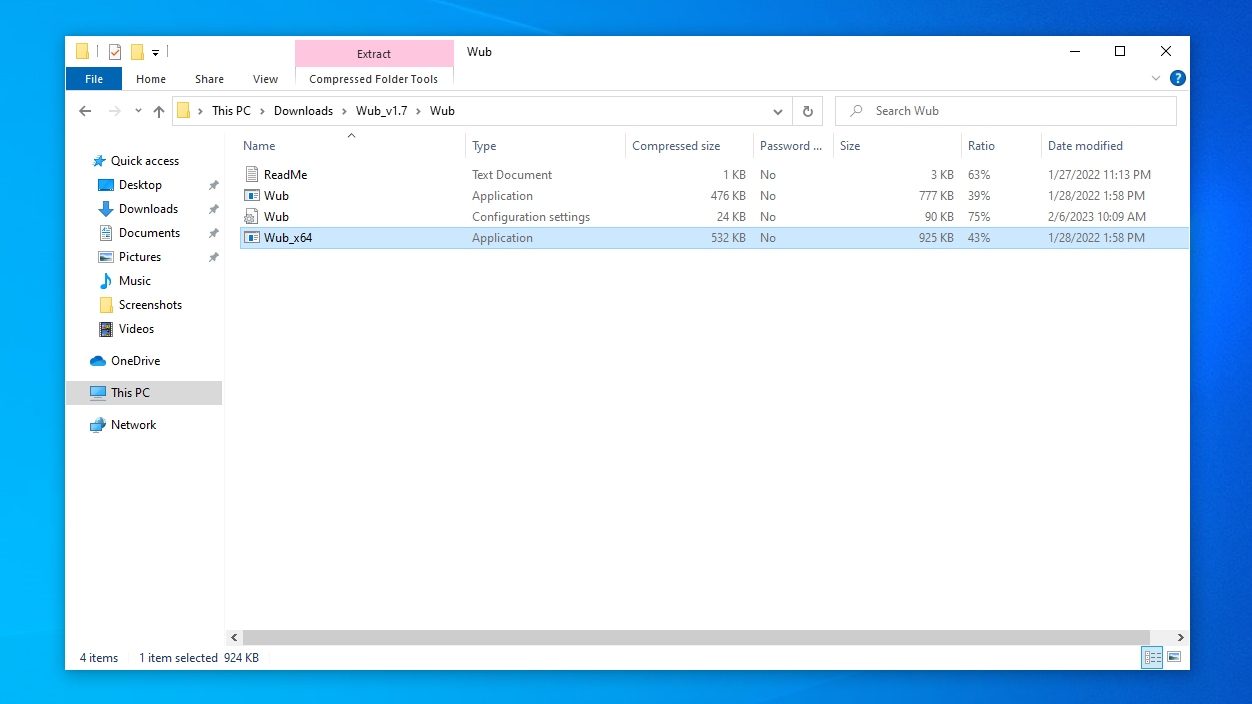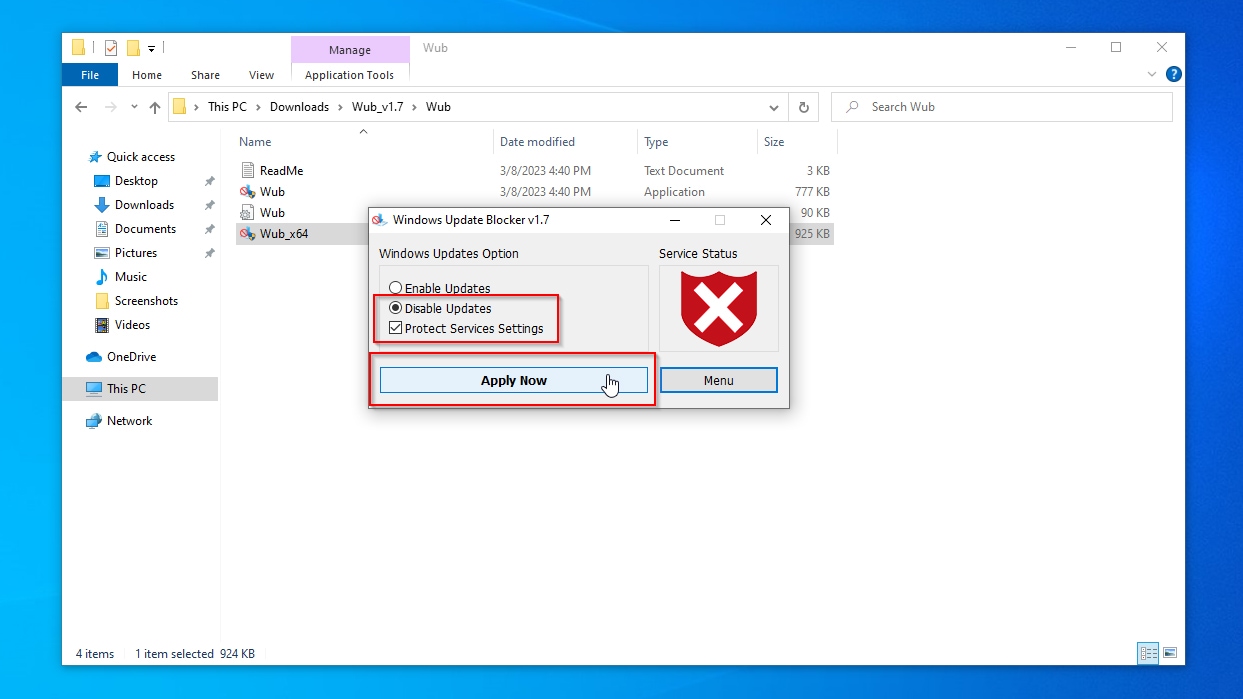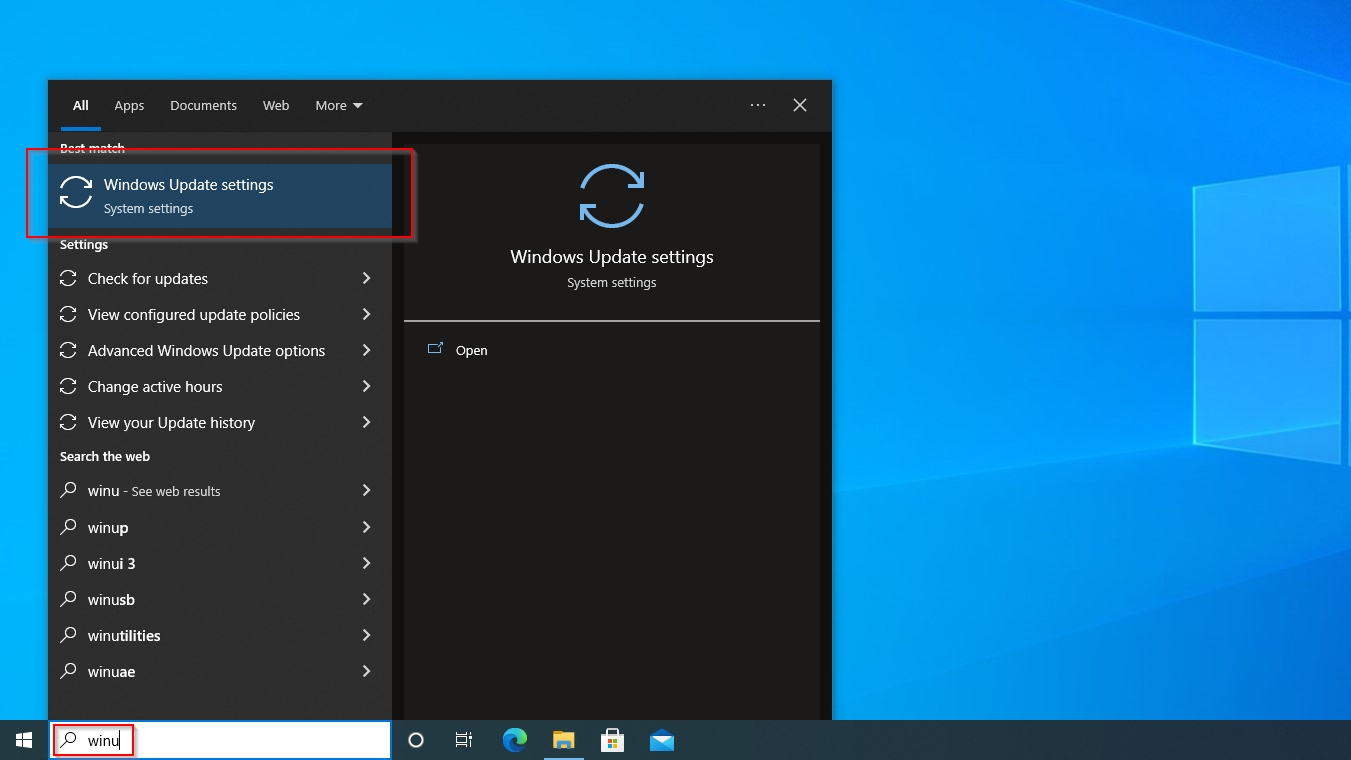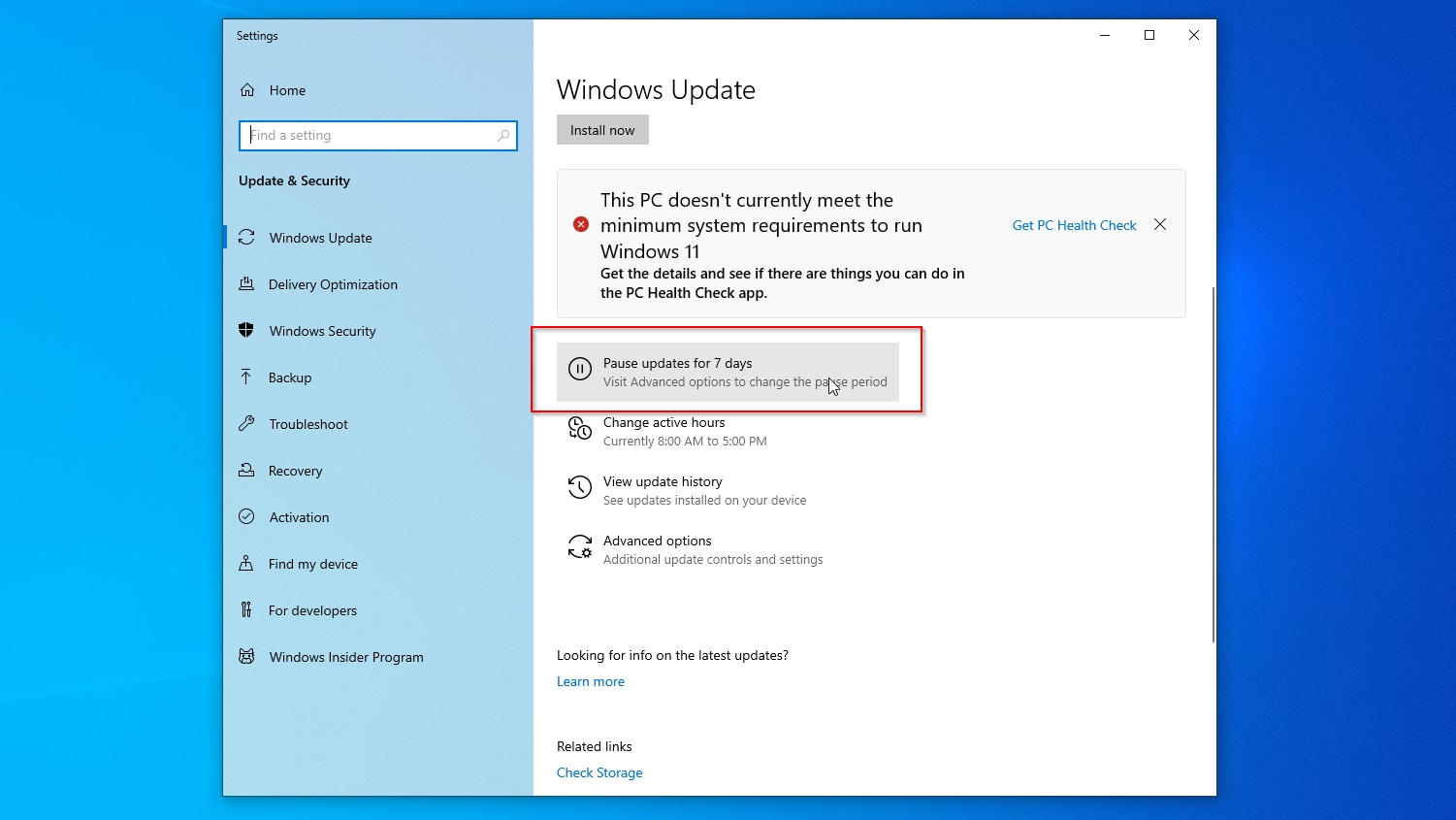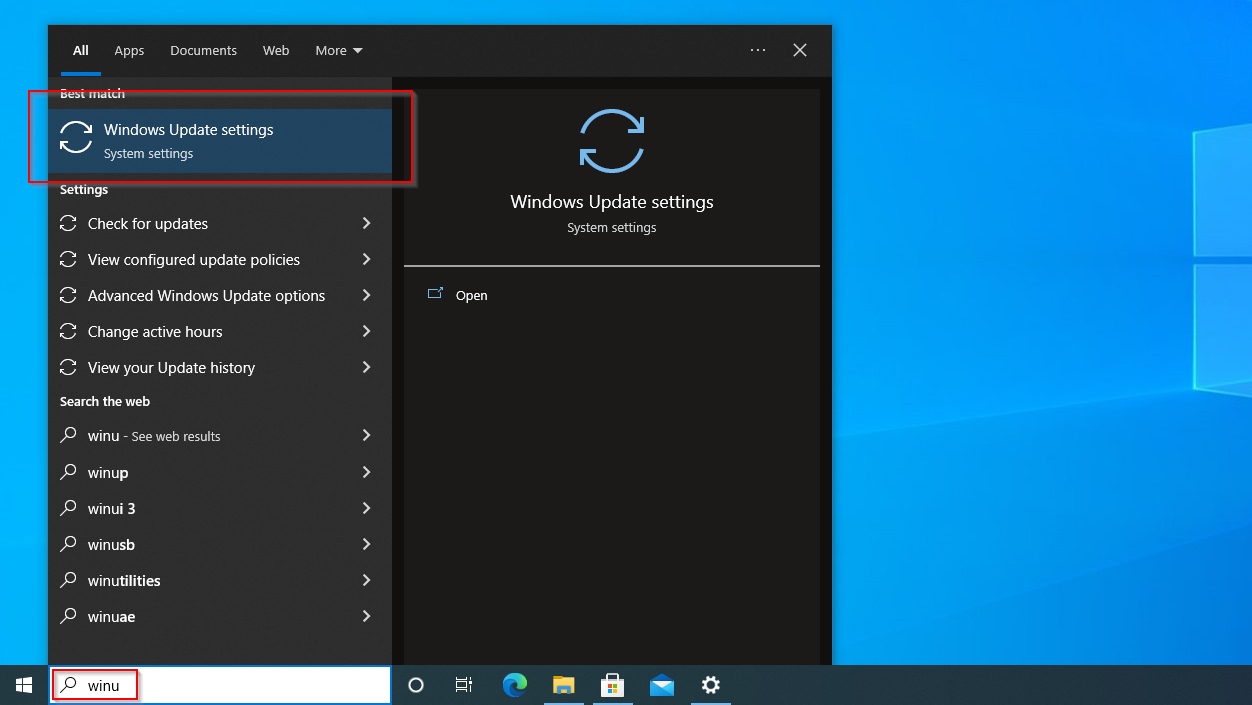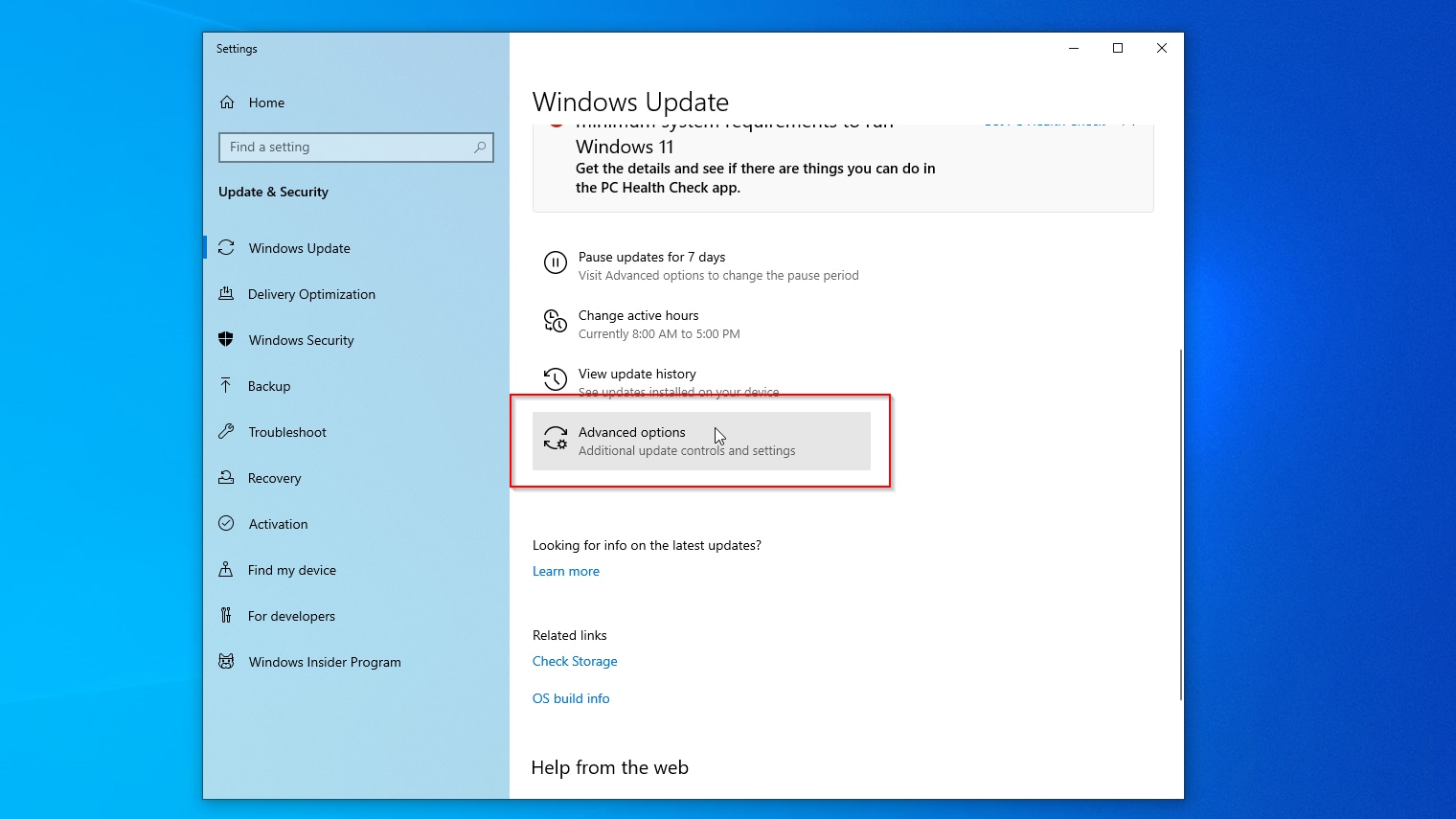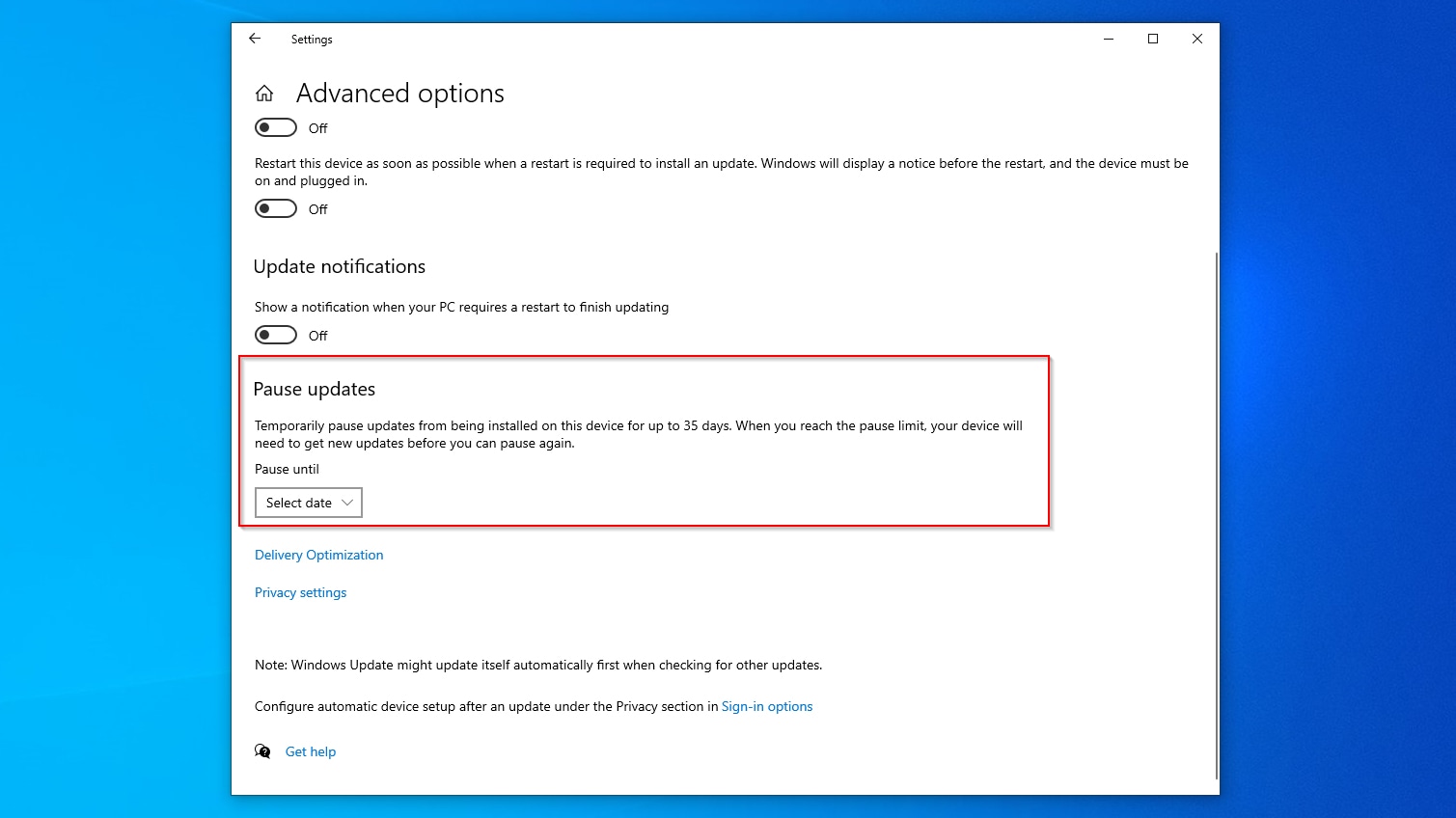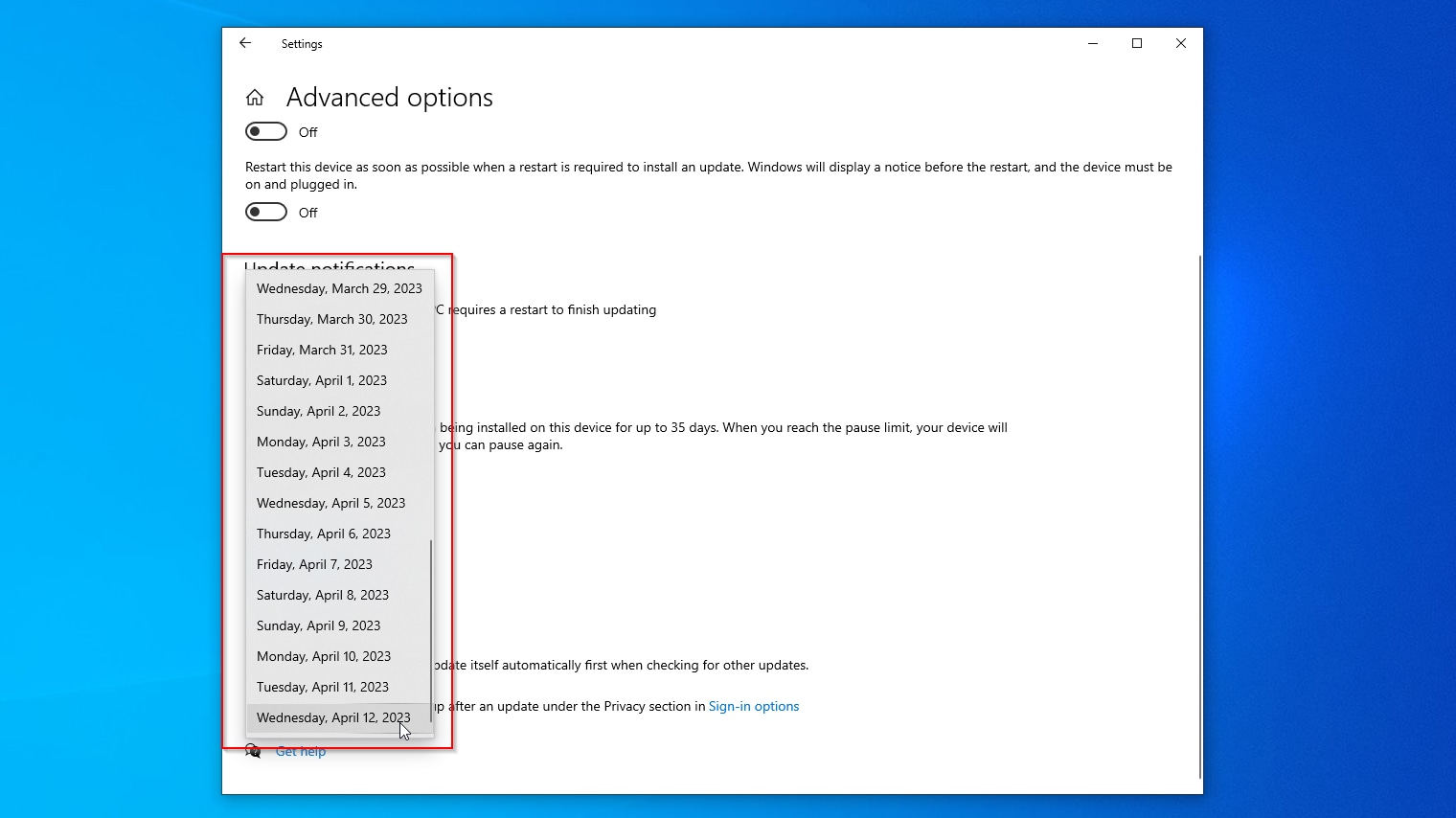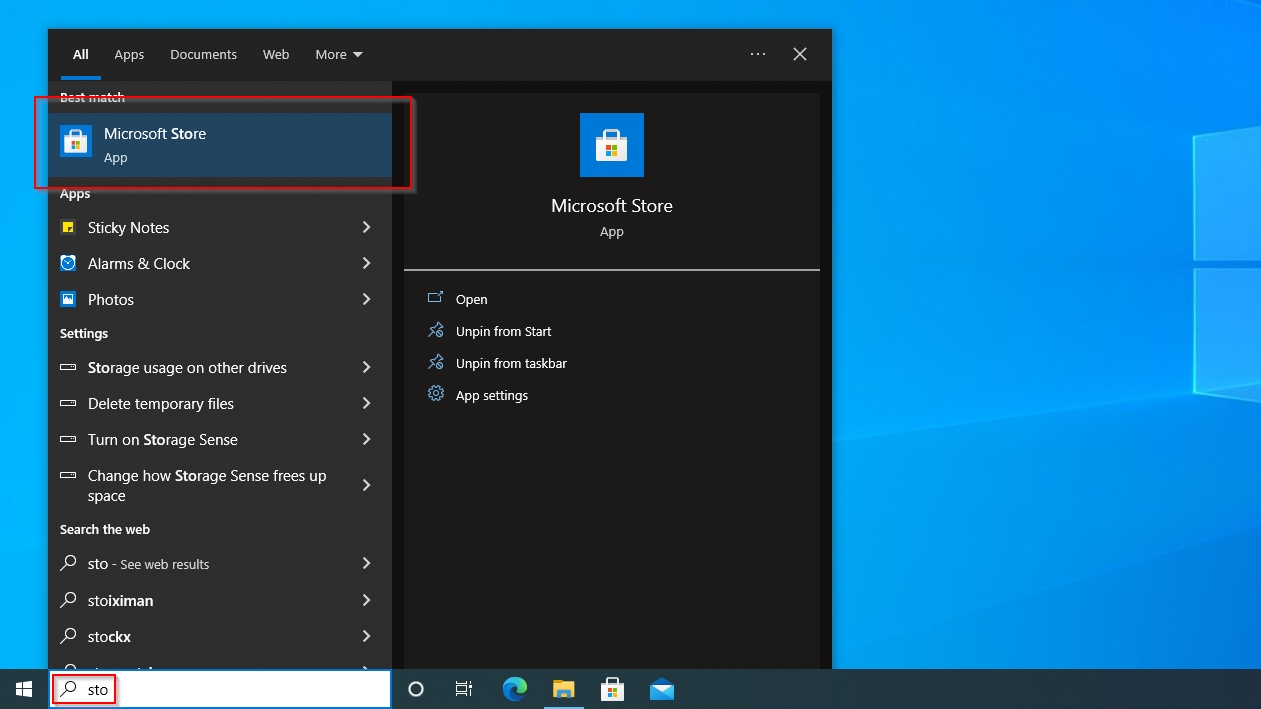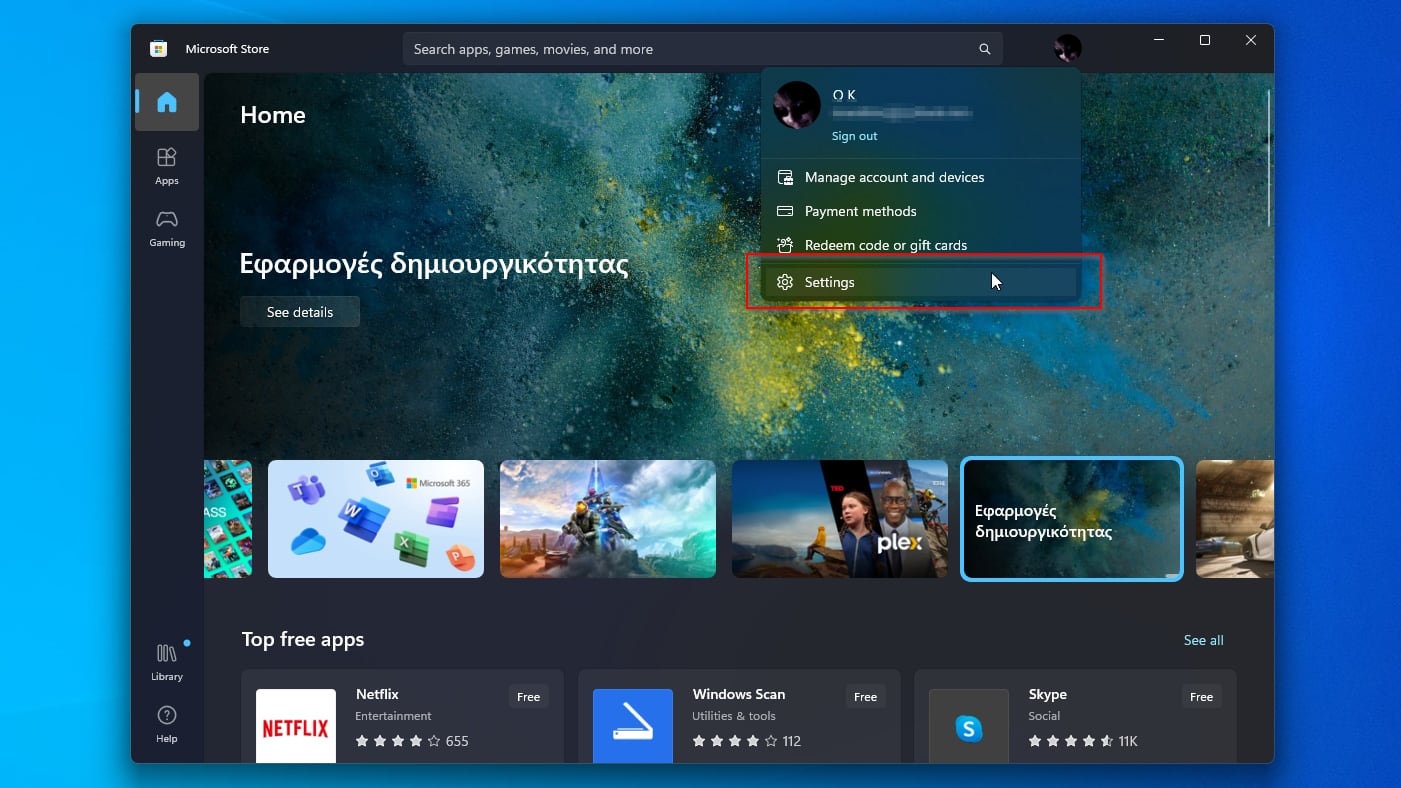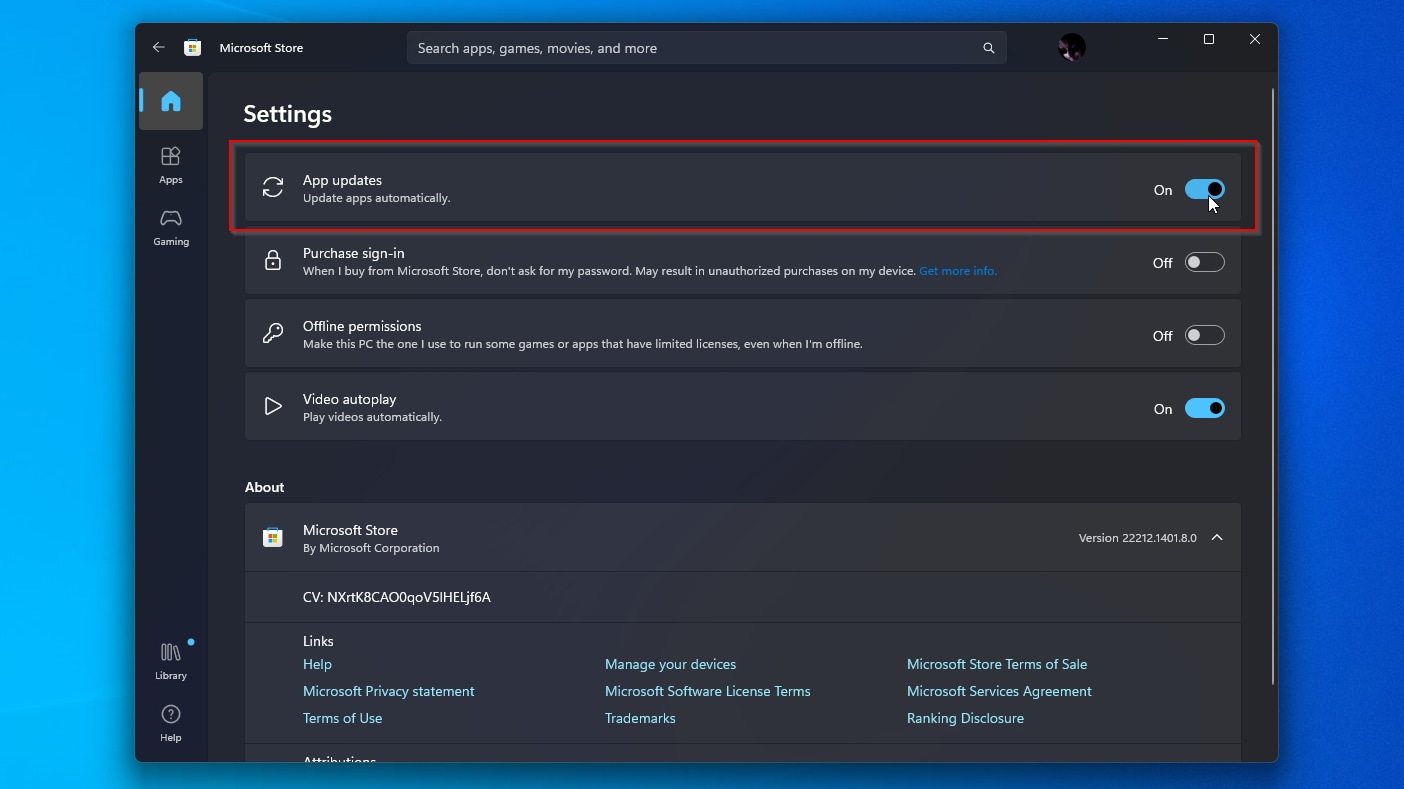This tutorial contains detailed instructions to turn off Windows 10 updates permanently. As you may already know, in Windows 10 you cannot prevent the Updates download and installation, by disabling the Windows Update service, because Windows 10 overrides this settingand forces the service to start and install the updates.
To avoid security risks and Windows problems it is not recommended to disable the Windows 10 update, but in some cases there is the need to do that, especially if you have problems during installing an update to your system or if you face stability issues or other problems after installing an update.
How to STOP Windows 10 Automatic Updates.
Part 1. How to Disable Updates in Windows 10 (All Versions).
Part 2. How to Stop Updates using Group Policy Editor in Windows 10 Pro, Enterprise, Education version(s).
Part 3. How to Temporarily Pause Updates in Windows 10 Pro, Enterprise or Education version(s).
Part 1. How to Permanently Disable Updates in Windows 10 (All Versions).
To permanently prevent Windows 10 to install updates, use one of the following methods.*
* Suggestion: If you want to easily and permanently disable Windows updates, follow the instructions in methods 3 & 4.
Method 1. Change Permissions to Windows Update files.
Method 2. Disable all Windows Update Services & Tasks.
Method 3. Remove Windows Update Service.
Method 4. Block Updates by using a program.
Method 1. Change Permissions to Windows Update files.
The first method to disable the Automatic Update in Windows 10, is to remove the default permissions on the following files: wuaueng.dll & wuauclt.exe. To do that:
1. Open Windows Explorer and go to «C:\Windows\System32\».
2. Locate the wuaueng.dll file, right click on it and choose Properties.
3. Select the Security tab and then click Advanced.
4. Click Change Owner.
5. Type your account name (e.g. «Admin»), or type «Administrators» and click OK.
6. Then, click Apply and OK at ‘Windows Security’ information message.
7. Now, click OK two (2) to close the Properties window.
8. Then re-open the Properties of the wuaueng.dll file and go again to Security tab > Advanced.
9. Now select & Remove one-by-one all the users from the list.
10. When done click OK and click YES (twice) and OK again to close the ‘Properties’ window.
11. Perform the same steps (1-10) and remove all users from the wuauclt.exe file
12. Restart your machine.
13. From now on, whenever you go to Windows Update window you’ll see a blank screen window (without any options), or you ‘ll receive the following error message: «There were problems installing some updates, but we’ll try again later. If you keep seeing this and want to search the web or contact support for information, this may help: Error 0x80080005» *
* Note: To re-enable updates, re-add only the SYSTEM account and give to it Read & Execute permissions.
Method 2. Disable all Windows Update Services and Tasks.
The second method to prevent Windows 10 automatic update, is more complicated because you have modify the Windows Update service’s properties and to change several settings in Registry and in the Task Scheduler. But if you want to try that method, follow the steps below:
Step 1. Disable the Windows Update Service.
1. Simultaneously press the Windows + R keys to open run command box.
2. In run command box, type: services.msc and press Enter.
3. Right click on Windows Update service and select Properties.
4. At General tab:
1. Press Stop to stop the Windows Update Service.
2. Set the Startup type to Disabled.
5. Then select the Log On tab.
6. Select This Account and then click Browse.
7. Type your account name and then click Check Names.
8. Then click OK.
9. Now type a wrong password (twice), and click Apply.
10. Then select the Recovery tab and set the computer’s response if the service fails to Take No Action. Then, click OK to close the Windows Update Properties.
12. Proceed to step-2 below.
Step 2. Disable the Windows Update Medic & the Update Orchestrator Services through Registry.
Proceed and disable the following two (2) Update services using registry:
-
- Windows Update Medic Service (WaaSMedicSvc)
- Update Orchestrator Service (UsoSvc)
1. Simultaneously press the Windows + R keys to open run command box.
2. Type regedit and press Enter.
3. At the left pane, navigate to this key:
- HKEY_LOCAL_MACHINE\SYSTEM\CurrentControlSet\Services\UsoSvc
4. At the right pane double-click at Start value
5. Set the value data (from «3») to 4 and click OK.
6. Then at the left pane, navigate to this key:
- HKEY_LOCAL_MACHINE\SYSTEM\CurrentControlSet\Services\WaaSMedicSvc
7. At the right pane double-click at Start value
8. Type 4 at Value data box and click OK.
9. From now on, you will receive the following error message whenever you try to download or install updates: «There were some problems installing updates,but we’ll try again later. (0x80070437) or, you’ll see a blank window (without any options) when going to Settings > Update & Security > Windows Update.
10. Proceed to step-3 below.
Step 3. Disable Windows Update Tasks.
1. Open Task Scheduler. To do that open Cortana search and type task. Then click to open Task Scheduler.
2. In Task Scheduler (left pane), navigate to the following location:
- Task Scheduler Library -> Microsoft -> Windows -> Windows Update.
3. Right click at Scheduled Start and click Disable.
4. Then right click at sih and click Disable again.
5. Close Task Scheduler.
6. You ‘re done! *
* Note: If you change your decision and you want to install the available Windows updates in the future, then just undo the above changes and then reboot your computer.
Method 3. Permanently Disable Updates by Deleting Windows Update Service.
An easy method to completely disable Windows updates is to delete the Windows Service. To do that:
1. Open the Registry Editor and navigate to this location:
- HKEY_LOCAL_MACHINE\SYSTEM\CurrentControlSet\Services\wuauserv
2a. Right-click at «wuauserv» folder-key and click Export to save the registry key of the Windows Update Service.
2b. Type a name for the reg file (e.g. «WindowsUpdateService») and Save the file on your desktop.
3. Now right-click at «wuauserv«, click Delete and then Yes to remove the key.
4. Close Registry Editor and restart your PC. From now on, Windows will not be able to download and install updates, and if you try to check/install updates manually, you will receive the error 0x80070424.
5. To re-enable Windows updates, just double-click at «WindowsUpdateService.reg» file on your desktop and click «Yes» to merge its contents in registry. Then restart your PC and you done!
Method 4. Block Updates in Windows 10 by using a program.
Another easy way to block Windows 10 updates, is to use one the following third-party programs.
-
- Windows Update Blocker.
- StopWinUpdates
Part 2. How to Stop Updates in Windows 10 Pro, Enterprise or Education version(s).
If you own Windows 10 Professional, Enterprise or Education version, then you can prevent Windows to download and install updates, from Group Policy Editor. To do that:
1. Simultaneously press the Windows + R keys to open the run command box.
2. Type gpedit.msc & Press Enter.
4. In Group Policy Editor navigate to the following path:
-
Computer Configuration\Administrative Templates\Windows Components\ Windows Update.
5. At the right pane, open the Specify Intranet Microsoft update service location policy.
6. Click Enabled and then type «http:\\neverupdatewindows10.com» at the 2 fields below («intranet update service address» & «intranet statistics server») and click OK.
7. Restart your computer.
From now on, you ‘ll receive the following message in Windows Update:: «We couldn’t connect to the update service. We’ll try again later, or you can check now. If it still doesn’t work, make sure you’re connected to the Internet.» *
* Note: To re-enable updates, just set the «Specify Intranet Microsoft update service location’ policy to «Not Configured» .
Part 3. How to Temporarily Pause Updates in Windows 10 Professional, Enterprise or Education version(s).
If you have problems when installing updates in Windows 10 Pro, Enterprise or Education version(s), then you can temporarily pause the Update(s) installation for 35 days. To do that:
1. Go to Settings -> Update & Security -> Windows Update -> Advanced options –> and set the Pause Updates* option to ON.
* Note: This option is only available in Windows 10 Version 1709 and later. In previous Windows 10 versions, check the «Defer feature Updates» (or «Defer Upgrades») option to prevent Windows 10 to download and install new updates.
That’s it! Which method worked for you?
Let me know if this guide has helped you by leaving your comment about your experience. Please like and share this guide to help others.
In 2015 Microsoft Cooperation produced a significant release in the operating system market which we all know as Windows 10. Since then, Microsoft releases several updates to this operating system to keep the system up to date. On the other hand, there are certain times, when their automatic updates keep annoying their users, which also results in a forceful shutdown of the system.
While installing the updates on the device, it consumes a lot of time & data to complete the whole process. So, there is no doubt that you might think to stop Windows 10 updates on the machine. This is why we’re going to discuss how to disable Windows updates.
We will now be discussing a list of required methods to disable updates on Windows 10 without causing any errors.
How To Stop Windows Update?
Method 1: Using Services
Step 1: At first, open the Search Box & write down Services there. Now, the Service option will be available & click on it.
Step 2: A big list will appear in the next window. Search for the Windows Update option & right-click over there.
Step 3: A new popup window will be opened. From the Startup Type dropdown menu, select the Disable option. And just below it, click on the Stop button. In the end, click on the Apply button to save the changes.
Hence, we have successfully stopped Windows 10 updates using the Services on the device.
Method 2: Using Group Policy
Step 1: Agin open the Search bar in Windows 10 & Search for the “gpedit.msc”. Just press Enter to move ahead.
Step 2: Now, the window for the Group Policy will be opened. In the left sidebar, first, expand the Administrative Templates. And inside that, again expand the folder Windows Components.
Step 3: Now, on the right-hand side of the screen, double-click on the option Configure Automatic Update
Step 4: On the left-hand side of the screen, three-button options are present. Click on the option Disable & close the windows.
Hence, we have successfully stopped Windows 10 updates using the Group Policy on the device.
Method 3: Using Register Policy
Step 1: To stop Windows 10 from update, run the “regedit” command in the Search Box on the device. Press Enter to move ahead.
Step 2: Now, a new window will be opened & the below-mentioned path should be followed by expanding folders on the Left Hand Side of the Screen. After reaching the endpoint of the path, Right Click on the folder Windows. Some more options will be available. Among them click on the New option.
Path: HKEY_LOCAL_MACHINE\SOFTWARE\Policies\Microsoft\Windows
Step 3: A new subfolder will be created inside the Windows folder. Give the name “WindowsUpdate”.
Step 4: Inside the “WindowsUpdate” using the same process create another subfolder. And provide its name as “AU”.
Step 5: On the right-hand side of the screen, right-click anywhere. Under the New option, select the option DWORD (32-bit) Value.
Step 6: Now, a new value will be added there & the value will be “NoAutoUpdate”. Then press Enter to save the changes & close all the windows.
Hence, we have successfully stopped Windows 10 updates using the Register Policy on the device.
Method 4: Using Task Scheduler
Step 1: To stop updating Windows 10, search for the Task Scheduler in the Search bar on the device. One option will be available with the same name, click on that to move ahead.
Step 2: On the left-hand side of the screen, expand the folder Task Scheduler Library. Under such folder, again expand the folder Microsoft. Inside the Microsoft folder, the Windows folder will be available.
Step 3: In the right-hand side window, a Schedule Start option is present. Right-click on the option & click on the Disable option to complete the process.
Hence, we have successfully stopped Windows 10 updates using the Task Scheduler on the device.
Method 5: Pause Updates
Step 1: Open the Settings. Inside the Setting window, click on the Update & Security option.
Step 2: In the next window, click on Advanced Options under the Update Settings.
Step 3: Inside the next window, the Pause Updates option will be available & enable the button. It will pause the updates in Windows 10 for 35 days.
Hence, we have successfully stopped Windows 10 updates using the Pause method on the device.
Method 6: Using Metered Connection
Step 1: At first, the Settings window will be opened. Then among so many options move for the Network & Internet option. Click on it to open.
Step 2: In the next window, from the left-hand side click on the option Ethernet.
Step 3: On the next window, an option will be present as the Metered Connection. Enable the button present below.
Hence, we have successfully stopped Windows 10 updates using the Metered Connection method on the device.
Step 7: Uninstall Updates
Step 1: In this case also, the Setitngs of the Windows will be opened. And in that window, click on the Update & Security option.
Step 2: In the next window, in the left-hand sidebar, click on the option Windows Update from so many options present there.
Step 3: After that, click on the View Update History option to move ahead.

Step 4: In the next window, click on Uninstall Updates to remove the installed updates from the device.
Hence, we have successfully stopped Windows 10 updates by Uninstalling Updates from the device.
Conclusion
These are some simple methods discussed to clear the Windows 10 update problem. But using some of the methods might not give a proper & permanent solution to it. All of the methods should be used one by one. Otherwise, you might receive another Windows 10 update patch on your device. So, following all the methods will only be the solution.
Время на прочтение
2 мин
Количество просмотров 7K
Read this article to find out how to disable automatic update option in Windows 10. Let’s explore how to remove an unnecessary or faulty Windows update by using integrated system tools or with third-party apps.
Do it with the Services tool
The first method works for Windows 10 Home, Professional and Enterprise.
Type Services in the search field (the magnifying glass icon on the taskbar) and run this system tool.
Find Windows Update service and open its properties.
Click on Stop and select Startup Type – Disabled
After these changes are applied and the computer restarts, Windows Update will not work anymore, so updates won’t be downloaded and installed automatically.
Try Local Group Policy Editor
The second method is only good for Windows 10 Professional and Enterprise. As other versions of Windows lack such component as Local Group Policy Editor.
To start the Local Group Policy Editor, type gpedit.msc in the search field and press Enter.
When in the Editor, go to Computer Configuration – Administrative Templates – Windows Components – Windows Update.
Find the policy Configure Automatic Updates, open it and set it to Disabled. Click Apply/Ok.
Free utilities to disable automatic updates in Windows 10
Also, you can use free utilities to prevent Windows 10 from updating automatically.
As an example, we’ll show you Win Updates Disabler, but there are other tools as well.
Run the program, jump to the tab Disable to check the box next to Disable Windows Updates. After that, click Apply Now for the changes to take effect.
As seen from the screenshot, this program can also disable Windows Firewall and Windows Defender. If necessary, you can turn everything on again in the tab Enable.
How to remove the updates that have already been installed?
If some updates were installed incorrectly, or you want to remove only particular Windows 10 updates, this is also possible.
To do it:
Go to Control Panel and select Programs & Features.
Jump to the tab View Installed Updates.
Sort them by installation date by clicking on Installed On.
Right-click on one of the updates which you want to delete from the system and click Uninstall.
Confirm your decision and changes will take effect after the system restart.
See the full article with all additional video tutorials. If you still have any questions, please ask in a comments. Also visit our Youtube channel, there are over 400 video tutorials.
Windows always installs the updates when you are trying to shut down your computer or laptop. In general, it is a troublesome issue for most users and many users wonder whether there is a way to disable Windows 10 update permanently. In this post, we will show you how to stop Windows 10 update while in progress via multiple ways.
The Issue of Windows 10 Automatic Update
Nowadays, many computer users complain that Windows always automatically installs some updates. And they want to know whether there is any solution to disable Windows 10 update permanently because some extra problems will occur after Windows update. For example, Windows update may give rise to data loss. Or a Windows update can’t be installed successfully due to error 0x800F0830-0x20003.
Thus, do you know how to stop Windows 10 updates automatically downloading? If no, this post will show you how to stop Windows 10 update permanently with 7 effective solutions. So, just keep on your reading.
Quick Video
Solution 1. Disable Windows 10 Update Service
In order to turn off Windows 10 update, you can try to disable Windows Update service which automatically downloads and installs the Windows 10 updates over the Internet. And in the following part, we will show you how to stop Windows 10 Update Assistant with step-by-step guide.
Step 1: Open Service window
- Press Windows key and R key together to open the Run dialog.
- Type services.msc in the box.
- Click OK or hit Enter to continue.
Step 2: Disable Windows Update service
- In the services window, please find out the Windows Update service and double-click it.
- In the popup window, change the Startup type to Disabled. Then change the Service status to Stop.
- Click Apply and OK to execute the changes.
After you have finished all steps, you can restart your computer to take effect to stop Windows 10 update.
Solution 2. Change the Group Policy
As for how to stop Windows 10 update, you can try to change the Group Policy. And the following steps will show you how to change the Group Policy in detail to stop Windows 10 update download in progress.
Step 1: Open the Local Group Policy Editor
- Press Windows key and R key together to open Run dialog, and type gpedit. msc.
- Click OK to continue.
Step 2: Find out the Configure Automatic Updates
- In the left panel of Local Group Policy Editor window, please navigate to the Windows Update folder according to the path: Computer Configuration > Administrator Templates > Windows Components > Windows Update.
- Then choose Configure Automatic Updates in the right panel and double-click it.
Step 3: Configure automatic updates
- In the popup window, choose Enabled to continue.
- Then choose Notify for download and auto install from the drop-down menu in the Configure automatic updating section.
- Click OK to continue.
When you have finished all the above steps, you can reboot your computer to turn off Windows 10 update.
Solution 3. Change the Registry to Stop Windows Update
Now, we will show you the third solution to how to stop Windows 10 auto update. As a matter of fact, you can try to disable Windows 10 update registry to solve this problem. The following contents will show you the detailed steps.
However, one important thing you need to know is that changing registry is pretty risky since it may give rise to irreversible damage to your computer if you operate incorrectly. Thus, you had better create a system image before proceeding.
To back up Windows 10, you can try the professional Windows backup software – MiniTool ShadowMaker.
MiniTool ShadowMaker TrialClick to Download100%Clean & Safe
After having backed up the Windows 10, you can go on to change the Registry.
Step 1: Open the Registry Editor
- Press Windows key and R key together to open the Run dialog.
- Type regedit in the box and click OK to continue.
Step 2: Find out Windows folder
Navigate to the Windows folder based on the following path:
HKEY_LOCAL_MACHINE\SOFTWARE\Policies\Microsoft\Windows\WindowsUpdate\AU
Step 3: Change Value
From the right panel, double-click on the NoAutoUpdate (REG_DWORD) and set its value to 1. Click OK to confirm. After that, restart your computer to stop Windows 10 update download.
Tip: If you are unable to find the WindowsUpdate\AU path, you can manually create one.
Solution 4. Disable Windows Update Tasks
In order to stop Windows 10 Update, you can try to disable Windows Update Tasks in Task Scheduler. We will show you how to disable Windows Update Tasks with step-by-step guide.
Step 1: Find out Windows Update in Task Scheduler
- Type Task Scheduler in Windows search box and choose the best-matched one.
- Open the Task Scheduler to enter its main interface.
- Navigate to the WindowsUpdate folder according to the path: Task Scheduler Library > Microsoft > Windows > WindowsUpdate.
Step 2: Disable Windows Update
- Right-click the Scheduled Start which is in the right panel.
- Then choose Disable to continue.
After that, you can close the Task Scheduler window and then you have successfully stopped Windows 10 update.
Solution 5. Meter Network Connection
As to how to stop Windows 10 update in progress, you can try to meter your network connection. But please note that this method only works on a Wi-Fi connection. So, it is not working for an Ethernet connection.
And now, we will show you how to meter the network connection to disable Windows 10 update.
Step 1: Select the Network & Internet
- Right-click Start button of Windows 10 and select Settings to continue.
- In the popup window, choose Network & Internet.
Step 2: Meter your network connection
- In the popup window, choose Status from the left pane to continue.
- Next, select Change Connection Properties.
- Then turn on Set as metered connection under Metered connection section.
In this way, you can disable Windows 10 update since it required massive network connection.
Solution 6. Pause Windows Update for 35 Days
In this part, we will show how to stop Windows update in Windows 10 by pausing Windows update for 35 days. So if you want to stop Windows 10 update temporarily, you can try this way.
Step 1: Open Update & Security
- Right-click Start button of Windows 10 and click Settings to continue.
- In the popup window, choose Update & Security to continue.
Step 2: Pause Windows Update for 35 days
- In the popup window, please locate at the Windows Update in the left pane and choose Advanced Options in the right pane to continue.
- In the popup window, please locate at the Pause Updates section and turn on the button.
After that, this function enables you to stop Windows 10 update for 35 days. However, after the pause limit is reached, you’ll need to install the latest updates before you pause updates again.
Note: If you are using the Windows 10 1903, Windows 10 Pro 1809, or Windows 10 Enterprise 1809, you can pause update for 7 days. And after the pause limit is reached, you also need to install the latest updates unless you can pause again.
Related article: How to Fix: Windows Update Stuck on Checking for Updates
Solution 7: Restore Windows 10 to Previous Version
At last, there is an available solution for you to stop Windows 10 auto update. It is to go back to previous version with the backup image. The precondition of this solution is that you have created a system image in advance.
In this way, you can go back to the previous version with this backup image even though you have updated your computer to the latest version.
Useful Suggestion
From above solutions to how to stop Windows 10 update while in progress, you can find that the system backup image is important since it can help you to keep your data safe and even help you to restore your computer to an earlier state.
Thus, do you know how to create a system image?
In fact, to back up Windows 10, you can take advantage of a piece of professional PC backup software. Thus, MiniTool ShadowMaker is strongly recommended.
MiniTool ShadowMaker is a backup tool which can help you to back up the files, folder, disks, partitions and the operating system. It helps you to perform some recovery solutions with the backup images.
And it is also a piece of file sync software which can effectively keep your data safe.
On top of that, MiniTool ShadowMaker is also a clone tool which can help you to clone OS from HDD to SSD without data loss.
Therefore, with so many powerful features, try MiniTool ShadowMaker Trial immediately or purchase an advanced version.
MiniTool ShadowMaker TrialClick to Download100%Clean & Safe
And now, we will show you how to back up the operating system.
Step 1: Launch MiniTool ShadowMaker
- Download and install MiniTool ShadowMaker.
- Launch it.
- Click Keep Trial to continue.
Step 2: Choose Backup Source
- In the popup window, please go to the Backup page, and click SOURCE to continue.
- Choose Disk and Partitions.
- Select the system disk and click OK to continue.
Step 3: Choose Backup Destination
- Returning to the main interface of MiniTool ShadowMaker, click DESTINATION to continue.
- There are four destination paths. Choose the available one and click OK. It is recommended to choose an external hard drive.
Step 4: Start to back up
- After selecting the backup source and destination, click Back Up Now to perform the backup task immediately.
- Or choose Back Up Later to delay the backup task and restart it on the Manage page.
Step 5: Create bootable media
- After backing up, go to the Tools page to create the bootable media which can be used to boot your computer when it can’t boot from the operating system.
- Click Media Builder to continue.
When all steps are finished, you have successfully created the system image and bootable media. When you want to go back to previous Windows 10 version, try this system image.
MiniTool ShadowMaker TrialClick to Download100%Clean & Safe
MiniTool ShadowMaker is a powerful program, successfully assisting me to go back up previous version of Windows 10. Click to Tweet
Bottom Line
To sum up, this post has introduced 7 solutions to how to stop Window 10 update. If you need to disable Windows 10 update permanently, try these solutions.
If you have any better solution to how to stop Windows update in Windows 10, you can share it on the comment zone.
And if you have any problem with MiniTool program, please feel free to contact us via the email [email protected] and we will reply to you as soon as possible.
How to Disable Windows 10 Update Permanently FAQ
How do I permanently turn off Windows Update?
- Disable all Windows update service.
- Change the Group Policy.
- Change the Registry Editor to stop Windows update.
- Disable Windows update tasks.
For more information, you can refer to the above part.
How do I turn on automatic update for Windows 10?
To turn on automatic update for Windows 10, you can follow on the below instructions.
- Press Windows key and I key together to open Settings.
- In the pop-up window, choose Update & Security to continue.
- Then choose Advanced options.
- Select the Automatic (recommended) under Choose how updated are installed to continue.
- After that, your computer will update automatically.
How do I update from Command Prompt?
- Run Command Prompt as administrator.
- Type the following commands and hit Enter after each command.
- UsoClient StartScan
- UsoClient StartDownload
- UsoClient StartInstall
- UsoClient RestartDevice
- UsoClient ScanInstallWait
You can read the post Two Efficient Ways to Do Windows Update from Command Line to learn more instructions.
How do I know which version of Windows?
To know the version of Windows, you can check that through the Windows Settings.
- Press Windows key and I Key together to open Settings.
- Click System.
- Click About on the left panel to continue.
- In Windows Specification section, you can learn about the Windows version.
Of course, you can also read the post What Version of Windows Do I Have? Check Version and Build Number to more ways to check Windows version.
To keep Windows safe and at the forefront of technology, Microsoft “borrowed” Linux’s approach of “rolling updates”. Unlike older versions of Windows, patches with new features and tweaks to existing functionality for Windows 10/11 are now released months, weeks, or even days apart. Fixes for security-related issues may reach your PC hours after they’re created. But there’s a catch.
Sometimes those patches and fixes can break things. A new desktop feature may be incompatible with an app you’re using. A security patch may “interfere” with an older driver.
Thankfully, updating isn’t mandatory. Read on to find out how to stop Windows 10 updates by disabling the Windows update feature temporarily or permanently.
🗨️
If you’re interested in disabling updates on Windows 11 instead of 10, rest assured this guide is all you need. Despite being officially deemed a new version of Microsoft’s operating system, Windows 11 is not a radical departure from its predecessor. Plus, the methods for disabling updates have mostly remained unchanged since Windows 7.
How to Stop Windows 10 Update Permanently
The best way to ensure an update won’t “break” your OS or an app you rely on is to completely turn off automatic updates on Windows 10/11. This way, you can have a Windows update only when you decide it’s time to do so.
Let’s see all the ways you can do that.
👀
If what you want isn’t to stop Windows 10/11 Updates, but to recover the files you lost after such an update, make sure to check our guide on how to recover deleted files after a Windows update.
Method 1: Turn Off Windows Update Service
One way to disable automatic updates on Windows 10/11, since the feature relies on an active background process known as “a service”, is to completely turn off this Windows Update service.
To turn off the Windows Update service:
- Open the Start menu or Windows Search and start typing “Services” to locate the services management app. Choose to Run (it) as administrator.
- Scroll down the Services (Local) list to locate Windows Update.
- Double-click on the Windows Update service or right-click on it and choose Properties to edit it. Change its Startup type to Disabled to forbid it from running automatically.
- If the Windows Update service is active in the background, you can terminate it by clicking the Stop button. Click OK to return to the services management app and then close it. Any changes should be effective immediately.
Method 2: Apply Changes In Group Policy Editor
If you are using Windows 10 Home Edition, feel free to skip this method. Otherwise, if using Windows 10 Education, Pro, or Enterprise, the following is another excellent way to stop Windows 10 updates permanently.
⚠️
This method should also work on the “more feature-complete” versions of Windows 11 except for the “base” Home edition.
To turn off automatic updates on Windows 10/11 through the Group Policy Editor:
- Use the Start menu or search functionality and perform a search for “Group Policy Editor” (or start typing “gpedit“). When you see the edit group policy entry, launch it.
- Use the navigation pane on the left of the Local Group Policy Editor‘s window to locate Local Computer Policy > Computer Configuration > Administrative Templates > Windows Components.
- Inside Windows Components, find Windows Update, but instead of expanding that entry, click on it to select it. You will see a list of variables related to Windows Update on the right of the window. Among them, find Configure Automatic Update, and double-click on it to edit it.
- Change the Configure Automatic Update entry’s state (from the options on the top left of the window) from Not Configured to Disabled. Click OK to accept the changes. Then, close the Local Group Policy Editor’s window and restart your PC for the changes to take effect.
Method 3: Enable Metered Connection
Instead of trying to disable Windows Update on Windows 10, there’s a cunning way to trick the OS into stopping downloading updates: set your Internet connection as metered.
⚠️
This method will only work on wireless connections. Although Windows 10/11 allows you to set Ethernet connections as metered, strangely, that’s only for show! The OS treats all “cabled” connections as unrestricted and unlimited. That is unless Microsoft updated that after this article was published.
To set your Internet connection as metered:
- Search for “network status” using the Start menu or Windows 10’s search functionality—then “open” the entry.
- Select your network connection and click Properties in its Settings window.
- Flick the switch under Set as metered connection to On. You can now close your connection’s Settings window.
- Use the Start menu or Search and seek “Windows Update Settings“. Then launch it.
- In the Windows Update Settings window, click on Advanced Options.
- Ensure the switch under Download updates over the metered connection (extra charges may apply) is set to Off. You may have to disable and re-enable your Internet connection or restart your PC for the changes to take effect.
Method 4: Disable Windows Updates With Update Blocker
If you don’t mind downloading and using an extra piece of software to block Windows updates, you can use a third-party updating disable tool to turn off automatic updates on Windows 10. This can help you completely block Windows updates with a few clicks without having to hunt down hidden options in Windows’ convoluted settings.
To do that with one of the most popular solutions for the task, Update Blocker:
- Visit Windows Update Blocker’s official site and download it to your computer. Extract the archive to a folder and enter it with your favorite file manager (like Windows File Explorer).
- In the folder, you will find two executables, Wub and Wub_x64, for 32-bit and 64-bit versions of Windows, respectively. Double-click on the correct one for your version of Windows to launch it.
- Change the Windows Updates Option to Disable Update to block all Windows updates. Also, enable Protect Services Settings to ensure your tweak won’t revert to its initial state. Then, click on Apply Now. The changes will take effect when you restart your PC.
How to Temporarily Disable Windows Update
You might want to keep using Windows Update and only temporarily disable automatic updates on Windows 10. You may only want to skip a new update incompatible with your hardware. Or to ensure you have enough time to back up your OS before a significant upgrade to a new Windows version.
Thankfully, it’s easier to disable Windows Update on Windows 10 temporarily than it is to stop Windows Update permanently.
Pause Windows Updates
The easiest way to temporarily disable Windows Update is by pausing it for a week.
👀
This option isn’t available on Windows 10 Home or Windows 11 Home. On those “base” editions, Windows updates are mandatory. You can pause updates manually on:
- Windows 10 Education
- Windows 10 Pro
- Windows 10 Enterprise
- Windows 11 Pro
Pausing updates for a week is as easy as the following:
- Use the Start menu or Search to seek “Windows Update Settings“, then open the entry.
- Click on Pause Updates for 7 days in the Windows Update Settings window.
- Close the window, and you’re set: your PC shouldn’t receive any new updates for the next seven days.
Do you need to postpone updates for longer? That’s possible, too, although a bit more convoluted.
To disable Windows Update on Windows 10 for more than 7 days:
- Use the Start menu or Search to find Windows Update Settings and open it.
- Click on Advanced Options.
- Scroll down to locate the Pause Updates section.
- Click on the Select Date pulldown menu and choose for how long you want to postpone updating your Windows installation.
With both methods, the adjustments should work immediately.
Pause Updates in Microsoft Store
In the latest versions of Windows, there is an additional path for software updates: the Microsoft Store. Many apps included with Windows, like Windows Notepad or Windows Sound Recorder, are also available on the Microsoft Store and can be updated from there.
Thus, to fully disable all Windows updates, including those of apps accompanying the OS, you must also skip updates from the Microsoft Store.
To pause updates in the Microsoft Store:
- Use the Start menu or Search to seek, find, and open the Microsoft Store app.
- Click on your account’s thumbnail to access your account’s menu, and click on Settings.
- Flick the switch next to App updates to Off to stop automatically updating apps from the Microsoft Store.
⚠️
Updates can help keep your Windows modern and secure, but they can’t “freshen up” your OS. If you’d prefer to reinstall Windows for that brand-new zippy feeling, make sure to also check our article on how to reinstall Windows without losing your data. And if you already did (reinstall Windows) but forgot to check our article and lost some files, don’t fret: we’ve got a guide on how to recover files after reinstalling Windows, too!
FAQ
It’s not suggested you turn off Windows 10 updates since they can keep your PC running smoothly, securely, and with the latest features.
Disabling Windows 10 updates is justified when you know one of them will disrupt how you use your computer.
Use the Start menu or Search to find and launch CMD “as administrator”. There, follow the steps below:
- Check the status of the Windows Update service with: sc.exe query wuauserv.
- Forbid the Windows Update service from auto-starting with: sc.exe config wuauserv start= disabled.
- Stop the Windows Update service with: sc.exe stop wuauserv.
- Recheck the service’s status with: sc.exe query wuauserv. This time it should report it’s Stopped.
Run Notepad.exe. Copy the following from here and paste it into your Notepad document:
sc.exe config wuauserv start= disabled
net stop wuauserv
Press CTRL + Shift + S, change the “Save as type” to “All files”, and save your batch file by adding “.bat” at the end of its filename instead of the default “.txt” extension for Notepad.
Right-click on your newly-created batch file, and choose Run as administrator to run it and have it issue both commands for disabling the Windows Update service in one go.
- Use the Start menu or Search to seek the “registry editor” (or “regedit” for short). Run it “as an administrator”.
- Use the navigation pane on the left of the Registry Editor’s window to find: HKEY_LOCAL_MACHINE\SOFTWARE\Policies\Microsoft\Windows .
- Right-click on the Windows folder (directly in the navigation pane on the left) and select New > Key. Give your new key the name “WindowsUpdate”.
- Right-click on your newly created WindowsUpdate key and repeat the process, making a new sub-key. Name it “AU”.
- Right-click on your new AU sub-key, and choose New > DWORD (32-Bit) Value. Name your new value “NoAutoUpdate”. Then, double-click on it to edit it, and change the number in the field under Value data to “1”. Click OK to save your edits.
- Close the Registry Editor and restart your PC for the changes to take effect.
Conclusion
Although Microsoft “borrowed” Linux’s “rolling updates” approach, it didn’t allow Windows the same freedom in controlling which updates should be applied and when.
As we saw, it’s easy to disable Windows Update temporarily for a specific timeframe as long as you know where to find the options that enable you to do so.
If you want to stop Windows 10/11 updates permanently, you have to dive deeper. It’s possible, but it can get complicated when navigating the Registry or issuing obscure commands using tools you rarely use (if ever).
Still, now you know how to do it, and after applying those tweaks once, you shouldn’t have to redo them.
Odysseas Kourafalos started playing with technology over thirty years ago, with a Commodore 128. Instead of gaming with it, he ended up trying to learn what made games — and tech, in general — tick. Since then, he’s used thousands of applications, from music trackers to video editing suites, on multiple platforms, and lived to write about them.
Andrey Vasilyev is an Editorial Advisor for Handy Recovery. Andrey is a software engineer expert with extensive expertise in data recovery, computer forensics, and data litigation. Andrey brings over 12 years of experience in software development, database administration, and hardware repair to the team.

